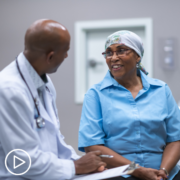Tag Archive for: genetic testing
What Is the Role of Genetic Testing in Colon Cancer Care?
What Is the Role of Genetic Testing in Colon Cancer Care? from Patient Empowerment Network on Vimeo.
Dr. Suneel Kamath discusses the role of genetic testing in managing colon cancer. From understanding hereditary mutations to the significance of family history, learn why awareness is important.
Dr. Suneel Kamath is a medical oncologist at the Cleveland Clinic Cancer Institute. Learn more about Dr. Kamath.
See More from DETECT Colon Cancer
Related Resources:

|

|
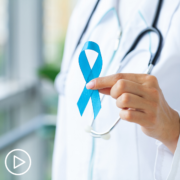
|
Transcript:
Katherine:
Where does hereditary testing or genetic counseling come in as a screening tool?
Dr. Kamath:
Hereditary testing, I think, is so important. I wouldn’t say it’s the best screening tool. It’s often best once somebody has already been diagnosed and you know that the disease is in the family. I do think it’s really, really important for people who have a family history of any cancer. Again, I go back to the fact that I think a lot of us don’t really know our family histories. I find for a lot of people when they’re first diagnosed with a cancer, that’s the first time they go talk to Mom and Dad, and to Uncle Joe Aunt Shirley, and they say, “Hey, do we have anything like this in the family?”
And it actually turns out – I often hear the second and third visits, “It actually turns out I do have a strong family history of cancer.” I just urge people that it’s not an easy thing to talk about, but have that conversation with your family. Also, be open to sharing that information if it was you because these things have heavy implications on everyone in your entire family.
Also, importantly, it doesn’t have to be the same cancer. A lot of people think it’s only if you have a family history of colorectal cancer that you might be at increased risk of others. But there are many syndromes that link uterine with colorectal and stomach and breast and whatnot. Being aware of any family history of cancer can really help us trigger the right genetic testing to find out if you have a hereditary syndrome or not.
What Key Testing Occurs Following an AML Diagnosis?
What Key Testing Occurs Following an AML Diagnosis? from Patient Empowerment Network on Vimeo.
What key tests occur following an AML diagnosis? Dr. Gail Roboz explains the procedures and tests to confirm the diagnosis, assess disease risk, examine AML genetic markers, and develop a treatment plan.
Related Resources:

|

Expert Overview | AML Treatment Options and Phases of Therapy |

|
Transcript:
Dr. Gail Roboz:
We often generally recommend a bone marrow biopsy, even if we know we can make the diagnosis from a blood test, because even though the bone marrow biopsy is not the most fun test in the world, it does offer better information for follow-up care than what you can get initially from the blood.
So, every once in a while, we do have a patient for whom a bone marrow biopsy itself for whatever reason can’t be done. But almost always, we need a bone marrow biopsy, and on that biopsy, you’re going to look under the microscope and see what the cells look like. You’re going to get back standard testing, which is called flow cytometry, which is going to tell the difference between what are the different cells that you’re seeing under the microscope.
But then you’re actually going to get progressively much more fancy testing, including things called chromosomes or cytogenetics, and then ultimately, the majority of patients, if at all possible, will be having mutational testing to identify certain subgroups of AML that benefit from very particular treatments. Next-generation sequencing, PCR, fusion proteins, FISH, cytogenetics, I can go on and on with all kinds of terminology that is very confusing, even to hematology fellows, let alone to patients.
Usually, we use a combination of tests to decide, “Is this patient likely to be able to be cured with chemotherapy alone, or might this patient benefit from a stem cell transplant from somebody else after they go into remission?”
That’s basically what the prognostic scoring systems used to be asking, but now it’s a lot more complicated than that. Because even in the favorable categories, even in the adverse categories, where there used to be very little subtlety, now there is a lot of subtlety.
It’s all about defining getting into remission, and what do I give you once you’re in remission to keep you there? It’s no longer this windshield wiper thing of good, bad, transplant, no transplant. There’s a lot more to AML than there used to be.
Elevate | What You Should Know About Your Role in AML Treatment and Care Decisions
Elevate | What You Should Know About Your Role in AML Treatment and Care Decisions from Patient Empowerment Network on Vimeo.
Related Resources:
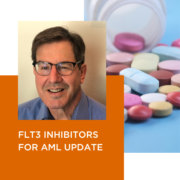
|

Thriving With AML | Advice for Setting Goals and Making Treatment Decisions |
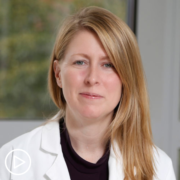
Expert Advice | Managing AML Symptoms and Treatment Side Effects |
Transcript:
Katherine Banwell:
Hello, and welcome. I’m your host, Katherine Banwell. It’s no secret that the quality-of-care patients receive can vary, and patients who are educated about their condition and involved in their care may have improved outcomes. That’s why the Patient Empowerment Network created the Elevate series, to help AML patients and their care partners feel well-informed when making treatment decisions with their healthcare team.
In today’s program, an AML expert will join us to share advice for accessing better overall care. Before we get into the discussion, please remember that this program is not a substitute for seeking medical advice. Please refer to your healthcare team about what might be best for you. Well, let’s meet our guest today. Joining us is Dr. Gail Roboz. Dr. Roboz, would you please introduce yourself?
Dr. Gail Roboz:
Absolutely. Thank you so much for having me. My name is Gail Roboz. I’m a professor of medicine and director of the clinical and translational leukemia programs at Weill Cornell Medicine and the NewYork-Presbyterian Hospital in New York City. Thank you again for having me.
Katherine Banwell:
Well, thank you so much for joining us today. We really appreciate it. I’d like to start by discussing your role as a researcher. You’re on the frontlines for advancements in the AML field. What led you here, and why is it important to you?
Dr. Gail Roboz:
So, I’m actually asked that question quite frequently, because AML is a challenging, difficult, scary disease, and people don’t necessarily assume that somebody in medical school would gravitate toward it.
But I have to say that what is incredibly fascinating back then and now about leukemia is the continuous access to the disease. Patients will maybe giggle or groan as I’m saying that, because you can get a blood sample really anytime. You can even get a bone marrow sample anytime, although patients don’t enjoy that so much.
But from a research perspective, it is absolutely extraordinary to be dealing with a disease where you can, in real time, truly run back and forth to a laboratory and see what’s happening, what is the new drug or the old drug doing, what’s happening with the patient, and I would say that from a fascination of a medical student perspective that grabbed me then and still does today.
Katherine Banwell:
When it comes to choosing therapy for AML, it’s important to work with your healthcare team to identify what will work best for you, the patient. So, I’d like to know how you define shared decision-making.
Dr. Gail Roboz:
The problem with AML sometimes is that it can be such an acute, emergency-type of presentation and urgent decision-making that I think your question is almost right out of the gate for some patients that will, “Wait, I don’t even have a minute, here. How do I build a team, do the research, look online if people are telling me that I’m in the middle of an emergency?”
That isn’t always the case for acute leukemia, but it sometimes is. I think that what happens in AML in particular for patients is a building of knowledge and a building of the team, and figuring out, first of all, where am I when I am being told this diagnosis, and is it really an emergency? Do I have to make decisions really right now, because is it life-threatening today, I don’t have time to look around? Or do I have a minute to pause and get more information?
I definitely feel that with the Internet era and with so much connection between doctors and teams, there is much more ability to reach out instantaneously for doctors, too, to get advice on a patient who might be in a smaller hospital that doesn’t have AML experience. But I think that the first thing is to try to figure out very, very quickly, what needs to happen to me as a patient immediately, and what can wait a minute, so that I can figure out what am I being told, and what are my options?
Katherine Banwell:
Right, right. It can be confusing for patients, just finding out this new information. Part of making care decisions is setting goals. What are AML treatment goals, and how are they determined?
Dr. Gail Roboz:
I would say that leaving cure on the table from the beginning is always a good place to start, because you want to figure out, first of all, what am I dealing with? What are the actual options?
But when AML strikes, and a patient who has multiple medical conditions or comorbidities that are truly compromising function independently of the diagnosis of AML, that’s going to be a special path of what is actually reasonable for someone who is terribly medically ill or otherwise frail right from the beginning? That can be defining goals, but I think from the beginning, the best thing is to leave everything on the table. What can actually be done to make me better, first of all, to get me out of my immediate trouble? What can be done to make me better, and if I’m getting better, well, I like that, how do I stay there?
What can be done to hang on to the state of ‘better,’ which is sometimes defined as remission? In AML, the goal is to get the bone marrow working again, functioning again, get rid of the acute emergency problem, if there is one, which there may or may not be in acute leukemia.
Sometimes it’s truly an emergency, and sometimes it isn’t. But once I get better, can I stay there? What is required to keep me with a working bone marrow for as long as possible?
But once you are starting to sort through the diagnosis, you realize that saying that somebody has acute myeloid leukemia is not telling me nearly enough information. This is a disease that is what we call biologically heterogeneous, which means there are lots of different forms. It’s like saying you’re sick. What exactly does that mean? There are lots of things that can make you sick. There are lots of different subtypes of AML, and fairly quickly in most institutions, we start getting back some information specifically on the subtype and biological characteristics of the disease.
This can be very, very important in the initial treatment planning, and depending on where you are, the information that you get back can sometimes take 24 hours, 48 hours, 72 hours, a week. So, you start learning very quickly though that, “If I’m not in a complete emergency that requires instantaneous treatment, can I get back more information about the biological subtype of the disease so that I can start treatment planning of what is my best option right out of the gate?” That’s usually called induction, or the first therapy that you’re going to get with the goal, ‘getting rid of leukemia cells and getting into remission.’ That’s part one, and then everything that comes after that is about keeping you in remission.
But for the initial goal, what is the therapy that the patient needs to get to get into remission? In order to figure that out, the good news is there are a lot of different ways to slice and dice getting into remission, and actually, it used to be such a weighty decision.
Now, I would actually encourage people to – not relax, you can never use the word ‘relax’ with acute leukemia. But there are several different induction strategies for most patients that would be okay.
So, even if you get started with one strategy and you hear five days later that another doctor might do something different, there are a lot of ways to safely get into remission. I think everybody should be pleased about the fact that we’re doing much better than we used to for patients across the board, all the way from children to much older adults, to safely getting people into remission.
Katherine Banwell:
Right. So, what sort of factors then do you take into consideration when you’re choosing a therapy?
Dr. Gail Roboz:
So, out of the gate, there are the patients that I think I referred to earlier who truly, truly are in situations based on their other diseases that there are certain treatments we would just cross out right out of the gate.
If there are patients with very, very severely compromised cardiac or renal or lung function or are terribly ill from other conditions, AML doctors will right out of the gate for those patients eliminate certain treatments. But absent that scenario, what we try to look for is the biology of the disease. Not look at the age, not look at the comorbidities unless they are so severe that they make obvious certain choices.
But rather, what I like to do is say, “What kind of AML is this, and what is the best treatment that I have to get this patient into remission?” And then ask the question, “can this particular patient handle this therapy?” Sometimes, these days, there actually may be more than one route to get to remission depending on the biology of the disease, and then, if that’s the case, then I can start getting picky and look at the individual patient. Where does the patient live? Who’s the patient’s family? What other diseases has the patient been treated for?
Is there something that I can use? If I have a choice, if there are a couple of different things that might work, how do I fit the treatment to best take care of the needs of this particular patient? If I don’t have choices, then my question is, “Okay, how do I get this patient through my one therapy that I think is the truly, truly best option?”
Katherine Banwell:
Okay. I’d like to turn to test results for a moment. What sort of tests should be done following an AML diagnosis?
Dr. Gail Roboz:
We often generally recommend a bone marrow biopsy, even if we know we can make the diagnosis from a blood test, because even though the bone marrow biopsy is not the most fun test in the world, it does offer better information for follow-up care than what you can get initially from the blood.
So, every once in a while, we do have a patient for whom a bone marrow biopsy itself for whatever reason can’t be done. But almost always, we need a bone marrow biopsy, and on that biopsy, you’re going to look under the microscope and see what the cells look like. You’re going to get back standard testing, which is called flow cytometry, which is going to tell the difference between what are the different cells that you’re seeing under the microscope.
But then you’re actually going to get progressively much more fancy testing, including things called chromosomes or cytogenetics, and then ultimately, the majority of patients, if at all possible, will be having mutational testing to identify certain subgroups of AML that benefit from very particular treatments. Next-generation sequencing, PCR, fusion proteins, FISH, cytogenetics, I can go on and on with all kinds of terminology that is very confusing, even to hematology fellows, let alone to patients.
Usually, we use a combination of tests to decide, “Is this patient likely to be able to be cured with chemotherapy alone, or might this patient benefit from a stem cell transplant from somebody else after they go into remission?”
That’s basically what the prognostic scoring systems used to be asking, but now it’s a lot more complicated than that. Because even in the favorable categories, even in the adverse categories, where there used to be very little subtlety, now there is a lot of subtlety.
It’s all about defining getting into remission, and what do I give you once you’re in remission to keep you there? It’s no longer this windshield wiper thing of good, bad, transplant, no transplant. There’s a lot more to AML than there used to be.
Katherine Banwell:
I’d like to add that if you, the viewer, are interested in learning more about AML testing and treatment, PEN has a number of resources available for you. You can find these at powerfulpatients.org/AML, or by scanning the QR code on your screen.
Before we get into specific treatment types, Dr. Roboz, would you provide a brief explanation of the phases of therapy for AML? You mentioned induction therapy earlier. Would you tell us what that is?
Dr. Gail Roboz:
Yeah. So, here, too, I have to say that it’s more confusing than it used to be for the following reasons. So, historically and currently, we typically talk about induction as the first therapy that you’re going to get to get into remission.
Then, the treatment paradigm is you do something to get into remission; do some treatment to get into remission. After that, in the realm of post-remission therapy, there are different things that can happen. There can be something called consolidation, which might be another round of chemotherapy. Some patients get consolidation, some patients don’t. After consolidation, there can be a transplant.
So, you get into remission, you may or may not get a little bit of what’s called consolidation chemotherapy, and then go on to a transplant.
However, sometimes either after the transplant or after chemotherapy before ever getting or instead of ever getting a transplant, there might be ongoing treatment in a lower intensity ongoing basis that is called maintenance.
So, you’ve got to think about it as induction as what happens first, consolidation is something that happens when you’re in remission, and then maintenance usually refers to ongoing therapy that is different from consolidation.
It’s usually lower intensity, easier to take, oral types of treatment that may go on and on. And just to be incredibly confusing, it’s different from something like breast cancer, where often the patients are given, “You get six cycles of this, and then you’re done.” From AML, there’s actually often not that type of an obvious plan right out of the gate for the patient.
The answer will be, “It depends.” It depends. It depends how your treatment looks at this point in time. It depends how you look at this point in time.
So then, the patients say, “Well, aren’t you going to cure me of this? What are you doing? Aren’t you going to get rid of it?” So, historically, there are some patients who get cured with chemotherapy. They get chemotherapy to get into remission, they get some chemotherapy afterwards, and there’s a cure rate for some patients with that. The majority of patients who are cured with AML get an allotransplant, or a transplant from somebody else.
Then there’s a whole group of patients where we’re asking the question now, is it possible to get those patients beyond five years – so in oncology, five years is typically defined as cure. Can we get some patients with ongoing therapy to that past-five-year mark without a transplant? That’s in the zone of the ‘coming soon.’ Don’t have a ton of patients in that group right now, but hopefully we will.
Katherine Banwell:
You’ve mentioned some various treatment types that are used to treat AML. Can you share a brief overview of available treatments?
Dr. Gail Roboz:
So, the terminology that we use is a little bit annoying, because it is a little bit general. We say intensive and not intensive.
But historically, intensive chemotherapy referred to a combination of generally two types of agents, cytarabine (Cytosar-U) and an anthracycline, which is a class of chemotherapy, that either just those two together or in combination with sometimes a third or a fourth drug usually keeps people in the hospital for around a month. Not that the chemotherapy takes that long, but the treatment gets rid of basically a lot of cells in the bone marrow, good guys and bad guys, and it takes about three weeks for those normal cells to recover.
So, a standard intensive induction for AML is often around three to four weeks in the hospital, somewhere between three and five or so days of chemotherapy up front, depending on exactly what the protocol is. The classic regimen is actually still called 3+7, three days of one drug, seven of the other. But there are many variations of that that work.
The chemo is then stopped, the patient hangs out in the hospital, very frequently getting transfusions and antibiotics, and we wait for the bone marrow to recover.
Another current path that many patients are getting – almost all older patients, with ‘older’ being defined not by a specific age cutoff, but often 75 and older, almost everybody agrees no longer gets the classic chemotherapy that I just described. At some institutions, that 75 is going down, and even 70 and 65 and above are getting a new type of therapy, mostly because the new type of therapy is working pretty well. That is a combination of something called a hypomethylating agent.
Drugs like azacitidine (Vidaza, Onureg) or decitabine (Dacogen) in combination with a pill that has changed the landscape of AML more than any other called venetoclax (Venclexta). Venetoclax is a drug that is not exclusively used for AML.
It actually was originally approved for another type of leukemia. But I think that not many people would argue with the statement that what has changed absolutely the face of AML treatment has been this drug, because it’s a BCL2 inhibitor. What it does is it actually – cancer cells and leukemia cells in particular are very, very good at staying alive.
They don’t undergo cell death, they don’t want to die, and venetoclax brings down their forcefield so that those cells can actually undergo apoptosis and die.
Venetoclax in combination with azacitidine or decitabine has transformed the care of the disease, because many patients older than 65 – and the median age of diagnosis of AML is around 68 to 70. So, many patients never were well enough to have the intensive therapy. They weren’t going into remission, and they weren’t having prolonged survival often beyond a few months.
But now, those patients do actually much better with the combination of aza [azacitidine] and venetoclax. So typically, the induction path is going to be deciding who gets an intensive therapy backbone, usually associated with long hospitalization. Who gets a less intensive backbone – by the way, that is often associated with just the same hospitalization. So, that’s why I don’t love the term ‘low intensity,’ because that implies that it doesn’t work.
It does, and it also implies that you’re not going to be in the hospital. You probably will, because in the same way as for the more so-called intensive therapies, getting into remission involves getting rid of bone marrow cells and waiting for the normal ones to recover. Even if you are a patient who is getting the venetoclax combined with the azacitidine or decitabine, which is typically called low intensity, you may very well be in the hospital for a month.
Because depending on where you live and who your family is and how sick you might be, you will probably want us to watch you carefully during that first month, but it’s worth it. Because if you have a good chance of getting into remission, remission is what makes life better and life longer. So, we want to get patients into remission, even if it means upfront time in the hospital.
Katherine Banwell:
You mentioned one inhibitor as targeted therapy, but there are a couple of others. Would you briefly tell us about those?
Dr. Gail Roboz:
So, over the years recently, we have identified certain specific targets in AML which are resulting in the addition of medications on these standard backbones. So, the target for venetoclax is something called BCL2, and actually, venetoclax probably makes all chemotherapy better. It’s kind of a controversial statement, but I’m going to stand by it. But in AML, it has been shown that the addition of venetoclax to lots of different backbones makes them work better. There are other things to hit, though.
For example, there are patients with AML who have something called a FLT3, F-L-T-3 mutation. This mutation also has specific inhibitors that are FDA-approved drugs that target specifically the FLT3 mutation, and if you have one of those, your doctor may add on a FLT3 inhibitor to either a lower intensity or an intensive backbone. Similarly, there are agents called IDH inhibitors. There are IDH1 and IDH2 inhibitors.
If I start getting into isocitrate dehydrogenase pathways on this webinar, I think everybody will click off, because it’s certainly bored all of the medical students in med school, and it’s pretty tough to understand. But the bottom line is it’s very cool stuff because that boring pathway in medical school that nobody really thought about too much is actually part of very, very, central cellular functions that are a vulnerability now that have been identified in leukemic cells that, if you hit them with these specific inhibitors, patients do better.
Now, couple of things for patients. It doesn’t mean that it’s better to have a FLT3 or an IDH mutation because the targeted therapies are available. So, a lot of patients are disappointed when they don’t have mutations. I don’t want you to think in that way. It’s not that it’s better, it’s different.
It identifies a different biology. If you have certain mutations, there are certain medications that may help you more.
That’s why I think the patients are learning quickly, too, to ask the doc – they may not remember the letters of the alphabet soup, but “Do I have something about my AML that can get one of these targeted therapies added on?” I think is a good question to think about. “Do I have something about my disease that has a specific drug that we’ve already learned makes outcomes better?”
Katherine Banwell:
There’s a new emerging therapy as well. Is it the menin inhibitor?
Dr. Gail Roboz:
I think that, in understanding different targets and different pathways, it leads me to a general statement that if you can get yourself potentially onto a clinical trial at an academic center, that is something to consider right out of the gate. Because there is a lot, a lot, a lot going on in this field right now.
What we are hoping, and the reason that I am talking to you about venetoclax and FLT3 inhibitors and IDH inhibitors, is because of all the patients who jumped onto those clinical trials and proved that those drugs are better. Some of them are my patients! I was fortunate on some of those early trials to have some real winners in patients who got onto the trials. They’re the ones who drove the success.
So, for example, menin inhibitors, which are very, very exciting, targeted agents for NPM1 and KMT2A mutations and rearrangements – these are complicated to remember as a patient, but there’s a cool drug out there that might be for you. I think that patients who really think about asking the question wherever they are, the “Hey, I just got a diagnosis of AML. Is there a clinical trial that might look good for me?” I think is a great question to ask pretty much out of the gate.
Katherine Banwell:
The symptoms of AML as well as the side effects of certain medications can vary greatly among patients. So, how do you approach symptom management with your patients?
Dr. Gail Roboz:
Patients will giggle because I repeat this line. You have to be afraid of the disease, not the treatment. I think that if you read the package insert on a Tylenol, you’re certainly not going to think you’re going to live for more than 20 minutes if you take one of those. You can certainly appreciate that, with chemotherapy drugs and including some of the novel agents that I’m talking about, if you read package inserts and look at some of the signs and symptoms and things that can happen, it’s extraordinarily overwhelming.
I think that a lot of what I do for patients is I keep them close. Because if the patient is in the hospital or coming in very frequently in clinic, I think that that everyday assessment of, “What are you experiencing?” and “What can I tell you is the disease’s fault, and what can I tell you is the medication’s fault?” is so, so important.
Especially in the newly diagnosed patients, where the disease is active. Of course, we want to try to minimize anything that we can do to make the process better for patients, more comfortable for patients, but there are certain things that we do tell people, “You’ve got to slug through this particular problem, because this is the disease’s fault.” This is different from a patient in remission, where they might be getting ongoing therapy with something, or we say, “Hey, wait a minute. You’d be feeling fine, except now you’re taking this medication. How do we minimize messing up quality of life in remission?”
Because we want you to feel great when you’re in remission. I think the real answer of that is to have a really close collaboration with the healthcare team, and for the patients to really understand – I repeat this because it’s so important. What is the disease’s fault, and what is the treatment’s fault? If there’s something that is therapy-related, do I have a substitute or do I not have a substitute?
Because if the drug is essential to get us where we need to go, well, what can we do to manage comfort and to manage symptoms until you get to the place where your marrow is working again?
Katherine Banwell:
That’s great advice, Dr. Roboz. I would like to get to an audience question that we received prior to the program. This one comes from Johanna. “How can I better understand my lab test results? What questions should I be asking my provider about those results?”
Dr. Gail Roboz:
One of the things that I would say to patients is to be careful when interpreting your own results, because I really am not exaggerating to say that patients have had absolute trauma looking at things that I look at it and say, “Oh, this looks great.” So, the first thing is, be careful being your own doctor.
The second thing though is that the author of the question has to understand that there’s going to be a tsunami of data coming in with respect to AML treatment. Sometimes in the hospital on a daily basis when you’re in the middle of an induction, there is a true – tsunami is the right word – a deluge of data, and you have to work with your team to say, “What am I following here? What’s important at this phase in my treatment? What’s the number I’m looking at?” Patients sometimes tell me, “I don’t want to know any of this,” and I’m fine with that.
I think it’s actually okay. Sometimes patients will say, “Give me guidance,” and I will be specific. Because you can actually have a leukemia induction patient where every single laboratory value is abnormal. They might be getting pushed to a device, in the morning, sitting in the hospital on your iPad, 50 abnormal results. You’re trying to battle back the disease and be positive and advocate for yourself, but there are 50 abnormal results in front of you.
I think you have to really work with the team to say, “What am I looking at today? What are the numbers that are the really important ones? There are 50 abnormal ones here; everything is getting a yellow or a red light in this. How do I go through this?”
And to appreciate, also, that at different points in the treatment, the beginning of treatment induction post-remission therapy, you’re looking for different things. So, work with your team so that you’re not assessing every single result with equivalent weight, because I think you’re going to stress yourself out.
Katherine Banwell:
That’s great advice, Dr. Roboz. Thank you. As we close out the program, I’d like to find out what you would like to leave the audience with. Why are you hopeful?
Dr. Gail Roboz:
AML is changing incredibly rapidly. And I can tell you it is a lot more fun to be an AML doctor now than it used to be, with respect to what I am offering for patients. We have always fought really, really hard to have our wins, but we’re winning more. I do think that it is a complicated space to navigate for patients, but there is room for a lot of optimism.
I think we are getting patients transplanted – patients that we never thought would ever go through a transplant or getting transplanted. Patients who never had a chance of even living more than six or eight months or living much longer than that. Is it perfect? No. Do we have as many cures as we want?
No, but there’s a lot going on. I think if patients feel that excitement, they will also feel the need to ask about those clinical trials. Because I think that for a lot of patients, clinical trials is an area where they would be worried. They’re not sure that they want to. “I don’t want to be a guinea pig,” and yet here I can say in the AML space, one after another after another drug approvals in the last several years, with the patients on those trials being awfully happy that they participated.
So, I think that it’s a very, very terrifying diagnosis. There’s nothing that I can do to take the sting out of that. But try to find yourself in an optimistic place with options that are being offered to the very, very, very best that we can do. There are patients who are listening, I’m sure, who have relapsed or refractory disease who are not feeling that optimism.
I want to address you specifically, because we don’t have enough yet. We’re trying. When you have AML that has come back or come back multiply, that’s dangerous and difficult. But for those patients in particular, try really hard to get onto clinical trials. If the drugs that we have out there – if you’ve already taken them and they haven’t worked for you or if they’re not serving you well, if you’re in good shape and the drugs that we have aren’t good enough, well, let’s see if we can get you on something that’s investigational.
Katherine Banwell:
Dr. Roboz, thank you so much for taking the time to join us today.
Dr. Gail Roboz:
Thank you for having me.
Katherine Banwell:
I also want to thank all of our collaborators. To learn more about AML and to access tools to help you become a proactive patient, visit powerfulpatients.org. I’m Katherine Banwell. Thanks for joining us today.
Newly Diagnosed Non-Small Cell Lung Cancer | Key Advice for Patients
Newly Diagnosed Non-Small Cell Lung Cancer | Key Advice for Patients from Patient Empowerment Network on Vimeo.
What’s key advice for newly diagnosed non-small cell lung cancer (NSCLC) patients? Expert Dr. Christina Baik from Fred Hutchinson Cancer Center discusses genetic testing, essentials to know about your lung cancer, and patient tips to ensure your best care.
See More from START HERE Lung Cancer
Related Resources:

|

Advancing Lung Cancer Treatment: Bridging the Gap in Personalized Care |
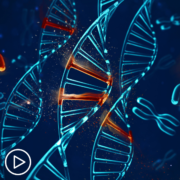
Understanding Oncogene-Driven Lung Cancer: Targeted Therapy Advances and Challenges |
Transcript:
Lisa Hatfield:
When a patient is diagnosed with non-small cell lung cancer, is genetic testing always done on the tumor, or do patients know what their mutations are right upon diagnosis if testing is done?
Dr. Christina Baik:
So, as a rule of thumb, they should, all patients should be tested, and there are exceptions. So, for example, in lung cancer, there’s the type that we call small cell lung cancer, and there’s non-small cell lung cancer. So we often, we usually do not do genetic testing on small cell lung cancer, because often these tumors do not have a genetic abnormality that for which we can actually give treatment for. But for non-small cell patients, I would say, if most, my personal opinion is that everybody should be tested with the genetic test and really advocate for that. You know, there are certain types of non-small cell lung cancer where there are genetic targets that are rare, however, you don’t know unless you test. So I would say yes to that question of testing for genetic abnormalities.
Lisa Hatfield:
Okay, thank you. So can you speak to the priorities for newly diagnosed patients, particularly populations who may have poor outcomes?
Dr. Christina Baik:
So, I think there are priorities when it comes to research, and then there are priorities for individual patients, right? So from a research standpoint, as I mentioned before, I think really the priorities, the priority is to develop strategies so that we’re truly personalizing treatment for each patient, and we’re not giving this kind of generic treatment for a bulk of the patients. So from a research standpoint, really understanding the biology, understanding what works for what patient, I think that’s extremely important.
On the individual patient level, we sort of alluded to this earlier, but really knowing the cancer we’re dealing with is extremely important. Know your cancer stage, ask what your cancer stage is, know the type of lung cancer that you have. So I will say as of now, there are, I can think of 12 or 13 different types of lung cancer that I want to make sure I know that patients, you know, what their subtype is.
So know your subtype of lung cancer. Ask those questions. If the knowledge is not known, if they say, “You know your stage is not very clear, your subtype is not clear,” then ask why that is, what type of additional testing that needs to be done. So I think those are the type of questions that each patient and their family member should really ask. And in terms of the poor outcome question, I think the first thing I would say is if a doctor tells you, you belong to a group of patients who are going to have a poor prognosis, then ask why that is, right? And understand the reasons for that.
And if that’s, once you understand, I think I’m a big proponent of getting second opinions, because a lot of these treatments and there’s a lot of medical judgment involved when we recommend treatments, and you just want to get a different perspective with the same type or set of information. So really being an advocate for yourself, I think that’s extremely important when you’re first diagnosed.
Lisa Hatfield:
Great, thank you. You mentioned two things I also feel strongly about, I don’t have lung cancer, I have a different type of cancer, but you said that patients and family members can ask questions. Having an advocate with you at all times, if that’s possible, a family member, a friend going with you, I think is super important.
And also getting a second consult to understand your diagnosis better. I appreciate you saying that, because some of us are a little bit reluctant to do that, maybe afraid of offending our doctors. So, I appreciate that as a patient myself, so thank you. Okay. So talking about disease progression and recurrence, particularly for metastatic non-small cell lung cancer, what should patients know?
Dr. Christina Baik:
Okay. So when a cancer initially responds to a treatment and it stops responding, there can be many reasons for that. So the first question to really think about is is there another test we can do to identify the reason for the progression? And can we personalize a treatment according to that resistance pattern or the change that occurs in the tumor? This is more relevant to patients who get a targeted therapy, but I think it’s a good sort of rule of thumb in terms of asking your doctor why that is, and is there more testing that’s required?
And the second I would say is once the cancer progresses after the initial treatment, then, unfortunately, in lung cancer the treatment options are much more limited, and the effectiveness is very limited as well. So, it’s really at that juncture to really seek out clinical trials. There are many trials that are out there. So really working with your doctor in identifying these trials. If there is an academic center that’s close to you, at least inquiring about that. In lung cancer, fortunately, there are many wonderful advocacy groups and these advocacy groups can be great resources in finding out about clinical trials and where to seek out opinions. So, I think it does require some homework at the time of progression but really seek those out.
Lisa Hatfield:
Okay. Thank you. Now, if a patient does have an interest in a clinical trial, say maybe they have, their cancer has progressed, would they seek out that trial through the academic center itself? If, say they live in a rural area and they don’t have access, would they contact the academic center itself, or would they seek out a specialist like you first to ask about those clinical trials?
Dr. Christina Baik:
So they sort of come together in a way, because a lot of the specialists are in academic centers. So I think there are two ways to go about it. One is to meet with the specialist who can give you kind of the landscape of where things are and what might be appropriate. So, that’s one way to do it. The other way to do it is if there’s a particular clinical trial that you’re really interested in based on discussions with other patients or through advocacy groups, if there are particular clinical trials, usually the contact information is listed on the clinicaltrials.gov website, and the contact number is usually for the research team who can give you more information about that particular trial.
Lisa Hatfield:
Okay. That’s very helpful, thank you. And thank you for this overview. I just want to recap a couple of points that you made that’s really important for patients to know. You had mentioned knowing their type, their subtype of lung cancer, knowing their stage, and knowing their mutations and having an advocate. I think those are all really great tips that you gave.
Share Your Feedback
Create your own user feedback survey
Advanced Prostate Cancer: What You Need to Know About Evolving Treatment and Research
Advanced Prostate Cancer: What You Need to Know About Evolving Treatment and Research from Patient Empowerment Network on Vimeo.
Research is evolving quickly, leading to an increase in treatment options for advanced prostate cancer patients. Expert and researcher Dr. Rana McKay reviews current prostate cancer treatment options, discusses where clinical trials fit into a care plan, and shares advice for partnering with your healthcare team.
Dr. Rana McKay is a Medical Oncologist at UC San Diego Health. Learn more about Dr. McKay.
See More from Evolve Prostate Cancer
Related Resources:

Which Factors Impact Advanced Prostate Cancer Treatment Decisions? |

How to Play an Active Role in Your Prostate Cancer Treatment and Care Decisions |
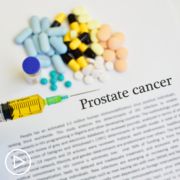
|
Transcript:
Katherine:
Hello and welcome. I’m your host, Katherine Banwell. When advanced prostate cancer patients discussed potential treatment approaches with their healthcare team, it’s important that they understand all of their options including where clinical trials fit in. So, the patient empowerment network created the Evolve Series, to help patients understand the latest research and how it may impact them. In today’s program, we’re joined by a prostate cancer expert who is going to explain and discuss research highlights, and provide tips for having productive conversations about your care. Before we meet our guests, though, let’s review a few important details.
The reminder email you received about this program contains a link to program materials. If you haven’t already, click that link to access a guide to help you follow along during the webinar. At the end of this program, you’ll receive a link to a program survey. Please take a moment to provide feedback about your experience today in order to help us plan future webinars. And finally, before we get into the discussion, please remember that this program is not a substitute for seeking medical advice.
Please refer to your healthcare team about what might be best for you. Well, let’s meet our guest today. Joining us, is Dr. Rana McKay. Dr. McKay, welcome. Would you please introduce yourself?
Dr. McKay:
Absolutely. My name is Rana McKay, I’m a genitourinary medical oncologist, at the University of California in San Diego. It’s a pleasure to be here, with you, on this program today.
Katherine:
And the sun is shining.
Dr. McKay:
Yes.
Katherine:
Which, is always good. Well, thank you so much for taking the time to join us today. Before we get into the discussion, Dr. McKay, I’d like to have you tell us how the landscape of advanced prostate cancer has changed over your career.
Dr. McKay:
Oh, my goodness. It has absolutely rapidly evolved over the last decade. I think when I was just starting my career, it was right around the time where Abiraterone and Enzalutamide were being heavily tested and just getting approved and entering into the clinic. And as we think about all of the evolution that’s happened since that time, we now have multiple androgen receptor pathway inhibitors in the clinic. We have radioligand therapies in the clinic, radium-223. The first radioligand therapy across any solid tumor malignancy to improve overall survival and on the heels of that, most recently, lutetium PSMA, which is a targeted radioligand therapy.
There’s several different kinds of chemotherapies, and I think two more diagnostics have evolved. We are now integrating molecular profiling across multiple areas in the disease natural history and actually have several FDA-approved treatments based off of results of molecular profiling, whether that be germline hereditary testing or just tumor testing like, PARP inhibitors and immunotherapy. And then, additionally, to kind of continue on that same thought of our diagnostics changing is one of the greatest disruptors in our treatment of prostate cancer has been the introduction of PSMA PET imaging that has really revolutionized our ability to be able to detect disease at lower levels of PSA.
And that’s opened up options for focal therapy, radiation therapy, and other sorts of strategies. So, it’s really been just remarkable, all of the different advances that have occurred in prostate cancer over the last decade.
Katherine:
Well, let’s dive into developing research and what it could mean for patients. Are there recent research highlights that you could share with the audience?
Dr. McKay:
Absolutely. I think the newest approvals that have occurred in prostate cancer have been the approvals of combination PARP inhibitors, which block the ability of cancer cells to repair their DNA combined with hormonal agents such as abiraterone (Zytiga) or enzalutamide (Xtandi) for patients who have specific mutations in their tumor and their tumor is no longer responding to treatment. Those are the newest FDA approvals that were recently highlighted and shared.
Katherine:
What areas of research do you specialize in?
Dr. McKay:
The areas of research that I specialize in are particularly around novel therapeutics for patients with advanced prostate cancer, biomarker development precision medicine strategies for patients across the spectrum. And actually, also, in the localized setting, thinking about how we can attempt to cure more patients with prostate cancer by integrating our systemic therapy with surgical and radiation strategies to improve survival outcomes for patients and ultimately, cure it for patients by using effective systemic therapy early on so patients never recur.
Katherine:
Yeah. We’ve been hearing a lot recently about innovations in technology. How are these advances accelerating prostate cancer care?
Dr. McKay:
Innovations of technology have absolutely been revolutionizing prostate cancer care I think from the diagnostic side, there’s new imaging modalities that are getting more refined. On the molecular side, there’s now different kinds of genetic tests. And our ability for us to do these tests, and do them quickly, and get results in real time that we can make decisions on we’ve come a long way from when we first sequenced the human genome. We’re now able to do that so quickly multiple times over in a very streamlined kind of way. And then, I have to say that there’s been tremendous improvement in our modalities of administrating therapies.
So, our therapies are getting more novel, they’re getting more precise. What I mean, by that is targeted radioligand therapy, targeting linking a small molecule that binds PSMA, labeling it with a payload that is radiation therapy or kind of radio therapy/radio particle doing the same thing with chemotherapy, developing antibody drug conjugates. There’s androgen receptor degraders. There’s different ways of administrating immunotherapy by specific antibodies. So, there’s just the different sorts of treatments that are out there.
We’ve just come such a long way from hormone therapy, which is still very important in chemotherapy to other different modes of action with the different systemic treatments we have.
Katherine:
What about individual patients? Is there research into understanding a person’s – just one person’s disease?
Dr. McKay:
Absolutely. I mean, that is in essence, precision medicine. I think we are now molecularly profiling tumors that is standard of care for anybody with advanced disease to undergo hereditary tumor profiling and – or hereditary profiling of just normal cells in the body, if there’s any sort of genetic abnormalities. But also, the tumor itself, and able to do that all for the actual biopsy specimen, or surgical specimen, and also blood. And then, based off of that individual’s genetic makeup, or the genetic makeup of the tumor, or the immune profile of the tumor actually trying to target therapy.
There is a clinical trial that we are eagerly developing through the alliance, which we hope will open to enrollment before the end of the year, called the PREDICT Study. And this study is using that very notion of taking somebody’s DNA and RNA from their specific tumor, and based off of their results, strategizing the treatment around what kind of genetic makeup is in the tumor. And I think we’re moving towards that.
Katherine:
What about common genetic mutations and what are you learning about people who have other genetic mutations like the BRCA mutation?
Dr. McKay:
For patients who have BRCA mutations, first I’ll say, the prevalence of BRCA mutations varies across the stage of prostate cancer that somebody has. In the localized setting, the prevalence is a lot lower on the order of 2 to 4 percent depending on somebody’s risk profile. In the advanced setting, it is higher, 6 to 8 percent. Patients who have BRCA alterations are particularly susceptible to PARP inhibitors, which are oral drugs that can be given that when given in an individual who’s got a BRCA mutation, can cause cell death; can cause a tumor cell to die. And so, that’s a very good thing.
I think the other thing, if thinking about the type of BRCA alterations, if there’s something that’s hereditary, this information is prognostic and predictive in that in can guide how people are going to – how we think they may do and what they may respond to. But it’s also really important because it can inform cascade testing for family members. It could also inform screening for secondary cancers in that individual who has prostate cancer with a known BRCA alteration. So, I think there’s a lot of personalization that happens based off of the molecular profiling results.
Katherine:
It’s all so exciting, Dr. McKay. But progress can only be made with patient participation in clinical trials, as we know. So, when should a patient consider participating in a trial?
Dr. McKay:
Thank you so much for bringing this point up. I think our clinical research is critically important to advancing the field. Clinical trials, I think, are really – they offer our patients the treatments of tomorrow today, quite honestly. And I think the way trials are designed, they’re designed to test different treatment modalities, test in reference to the standard of care. I think at any point in time, anybody can think about enrolling on a clinical trial. I think sometimes there’s this false notion that, “I’m not going to enroll in a trial until later on, until I’ve failed all different kinds of treatments.” That’s not true.
I think at any juncture along the way where a decision is being made around initiating a systemic therapy, or proceeding with a surgical intervention, or radiation intervention it’s always worthwhile to stop and ask, “Are there any clinical trials that I could be eligible for right now? And if so, what are they? So, I think it’s really important, I think, for patients to know that and to ask of their clinicians that are caring for them, “Are there any clinical trials?”
And it may be that patients, not to say, may need to travel, but if they’re not necessarily at that institution where somebody may be receiving their care with a clinician asking their doctor, “Are there other trials at places close by where I can go and explore?” I think that’s a really important thing.
Katherine:
Yeah. That’s good information. What about common misconceptions? What are you hearing from patients about their fears and hesitations about participating in the trial.
Dr. McKay:
Yeah. I think a lot of patients have a fear of, “I don’t want to be a hamster or a guinea pig. I don’t want to get placebo. I don’t want to get suboptimal care.” So, I think, to step back, I think the clinical trials are designed where actually patients are followed very, very closely, probably even more closely than I think would be in general with laboratory tests, PSA testing, imaging, at critical time points to assess that any therapies or strategies is working. Many trials are not necessarily placebo-controlled trials.
Placebo-controlled trials are really only utilized in the context when somebody may – where the standard of care is to either do nothing or do one drug alone, not two drugs, and then, somebody’s getting one drug and getting a placebo. So, the placebo-controlled trials are really, first off, they’re later-staged studies, they’re usually Phase III studies, or large Phase II studies that have gotten pretty far on the runway of clinical trial and clinical drug development.
And it’s in the context of, you know, “Well, if I didn’t do the clinical trials, I’m probably not going to do anything,” or I’m not going to – you know, “If I decided to not do the trial, I would get no treatment, but if I’m doing the trial, there’s a 50 percent chance I’ll get no treatment and 50 percent chance I may get something. So, we have to think about, “Well, what is the standard of care?” and the standard of care matters because that is what it’s being compared to. If the clinical situation is that the standard of care is to monitor, then that’s where a placebo may be utilized.
But if a standard of care is that somebody should get treatment with X drug, then that X drug would be in the controlled arm of the study.
Katherine:
Yeah.
Dr. McKay:
But not every trial has a placebo.
Katherine:
What would you say to someone who is nervous or hesitant about participating in a trial?
Dr. McKay:
Yeah. Very good question, I think. Talk to your clinician. Talk to your doctors about those fears. What are the reservations? What are the concerns? Sometimes, I think the unknown is always – the fear of the unknown kind of causes a lot of angst. But when people are on a clinical trial, when you’re on a clinical trial, you are in control. Some people don’t believe that, but you are, at any point in time, you can decide to stop. You don’t even need to have a reason for why you decide to stop. At any point in time, if something is not working for you, you have choice.
And so, I think that is something that is really important for patients to know that you’re actually in control, you’re being watched very closely, being watched very carefully for safety toxicity. If there’s a toxicity, people are not going to – you’re not going to just stay getting the same regiment in the exact same way if you’re not tolerating it. If something isn’t working, you’re not going to continue receiving the therapy that’s no longer working just because you’re on a clinical trial.
Katherine:
Right.
Dr. McKay:
And you’re in control; at any point in time, you could say, “I don’t want to participate anymore.”
Katherine:
Yeah. Are there barriers for accessing trials? And if so, do you have any recommendations for how to tackle those?
Dr. McKay:
Yeah. I think there are barriers to accessing trials. I think it can be very overwhelming because there’s thousands of clinical trials that are being conducted for people with prostate cancer. And I think as a patient, sometimes it’s hard to navigate that. But I think the thing to take home is that you do not have to do it alone, and you should not do it alone because I think half of the trials that are out there, the large bulk of them may not necessarily be directly applicable to you or relevant for you.
And so, I think talking to your clinician about that, I think seeking care, even if just for a second opinion at an NCI-designated cancer center, or NCI-designated comprehensive cancer center is probably a good idea. You know, if you’re hearing the same message from your local clinician then that’s great. If there’s more options that are being presented to you, that’s great, those are more options that you could tap into. I think talking to patients who have gone on a trial may also help away some of the fear around participating in a clinical trial, and there’s lots of platforms where that could take place either asking your physician, or the American Cancer Society, or other societies can help connect patients to one another.
Katherine:
Okay. I’m glad you mentioned some of the resources because that’s what I was going to ask you about. Well, I want to mention to our audience that if you want more basic information about prostate cancer, PEN has created a prostate cancer toolkit, which includes information about diagnosis and staging. And you can find it at powerfulpatients.org. So, before we move onto understanding current treatment options, Dr. McKay, what are the goals of advanced prostate cancer treatment? And how do they vary by patient?
Dr. McKay:
Yeah. I do think the goals can vary. I think in my mind, a lot of times, it’s making people live longer, making them feel better. Those are the two salient goals and if our therapies are not achieving one or other of those two goals then we need to rethink the strategy. But different people are different, and they may weigh the risks and benefits of any given therapy, or the slated benefit with the slated risk through a different lens. And I think it’s critically important to ensure that you’re having those communications with your doctor about the things that matter to you and the things that are really important to you.
Especially, for people who have advanced prostate cancer. So, I think that can help your clinician strategize, “Okay, is this an individual who wants the kitchen sink everything that I can do even if that means more toxicity that I’m going to offer this thing? Or is this a situation where, you know what, unless there’s data that the kitchen sink is going to work, I really kind of want to temper things and try an approach that’s going to be effective, but maybe not associated with that degree of toxicity.” So, those kinds of conversations absolutely need to be happening.
Katherine:
Yeah. With all the recent advances in treatment, is there a standard approach now to treating someone with advanced disease? And if so, what is it?
Dr. McKay:
Yeah. There absolutely is a standard approach. There’s guidelines that are based off of the FDA-approved regimens of the different agents that can be utilized. There’s data regarding sequencing though, I think there’s more data that needs to be had on sequencing. There are guidelines on when to do germline testing, when to do tumor profiling, when to integrate PSMA PET imaging, the standard hormonal agents, who to use them. So, I do think that there are – there’s a set framework of appropriate management and treatment. But there’s a lot of personalization that is overlaid on top of that rubric. And I think that’s the art of medicine.
Katherine:
Right. Is there testing to understand if a patient’s disease is more aggressive? Or maybe will respond to a certain type of therapy before you begin it?
Dr. McKay:
Yeah. A very good question. And I think predictive biomarkers, as you described them, there are several for men with prostate cancer, but there’s not a ton of them. So, we know that homologous recombination repair alterations, HRR, gene alterations, particularly BRCA 1, 2, probably 2, we know that those are biomarkers of response to PARP inhibitors. We know that patients who have high tumor mutation burden, or have a mismatch repair, that those are markers of response to immunotherapy. We know that if people have a certain level of PSMA PET vividity on their PET scan, that that’s a biomarker for receiving lutetium PSMA.
Those are the main biomarkers that are actually in use in the clinic to date. But I think there’s a lot more that I think are being explored from mutations in the androgen receptor, or amplifications in the androgen receptor, being potentially predictors of response to different degraders, different kind of hormonal agents. There’s certain tumor suppressor gene mutations that may predict that patients may do a little bit better with chemotherapy. So, there’s other markers that are being looked at, but they don’t have the same robustness as the BRCA 1, 2 and other ones that I talked about.
Katherine:
Yeah. How does a patient’s health and lifestyle impact what treatment approach is right for them?
Dr. McKay:
I mean, health and lifestyle, diet, and exercise, nutrition, sleep are so important. I think that one of the backbones of treatment for hormonal therapy is androgen deprivation therapy. There can be negative consequences with regards to muscle mass, bone mass, other things related to that therapy. So, I think it’s critically important for patients to maintain a healthy diet, making sure they’re getting appropriate exercise, weight-bearing, resistance training.
And I think, too, this helps people with their functionality, with their ability, their reserve, and ability to tolerate treatment or tolerate more aggressive treatment. So, half of my clinic is talking about diet and exercise, and how to optimize individual health when people are on therapy.
Katherine:
Yeah. Mentally, a good diet and sleep –
Dr. McKay:
Yes.
Katherine:
And exercise is going to be helpful.
Dr. McKay:
Yes.
Katherine:
As well. What about comorbidities? Do they play a role?
Dr. McKay:
They absolutely do play a role. I think comorbidities like cardiovascular disease, diabetes absolutely can play a role. The hormone therapies, patients can have a propensity to gain weight, they can have a propensity to have worsened cholesterol being on hormone therapy, which can then affect somebody’s cardiovascular health. And so, some of the drugs cause increased hypertension. So, I think understanding the different comorbidities that any individual may have is important in selecting the best therapy, “Well, actually, if you’ve got X, Y, Z going on, maybe I’m going to shy away from this, but lean more towards that.”
I think making sure that your physician knows about that and knows about changes that happen along the way. Sometimes, people with prostate cancer, many a times they have a long, natural history where they’re seeing the physician caring for them for their prostate cancer over many, many years. And somebody’s medical history, when they first saw that individual, it’s going to change and evolve over time as different things happen. And so, I think keeping your clinician that’s caring for you for your prostate cancer informed of all the other non-cancer things that are happening I think is a really good idea.
If you had a fracture, that’s actually a really important thing for somebody who’s got prostate cancer. Or “Gosh, my primary care just started me on Metformin because they think my blood sugar is a little bit off.” These are important things, I think, for clinicians to know about.
Katherine:
Yeah. It’s all about communication, isn’t it?
Dr. McKay:
Absolutely. Yeah.
Katherine:
Don’t worry about over-sharing.
Dr. McKay:
Yeah.
Katherine:
Yeah. Speaking of sharing, shared decision-making has become the gold standard, really, for encouraging a successful relationship between a patient and their healthcare team. What does shared decision mean to you as a provider?
Dr. McKay:
Yeah. I think shared decision is an open dialogue. I think it’s an open dialogue with the physician, with the patient, sometimes, often times, the patient’s caregivers, and families, and loved ones may be involved in that process, where we’re talking about, first off, establishing the goals. Well, what are the goals? And I think, when we start with the goals then, we can say, “Okay. Well, what are the things that we can do to achieve those goals?” And I think sometimes we just dive right into, “Well, what are we going to do with the next step?”
So, I think establishing what the goals of therapy are the things that matter to any individual patient and their family is important. And then, from there, working on, “Okay. Well, aligning with those goals, these are the different things that you can do. These are the pros and cons of the different things that you could do,” and making an informed decision about the next step.
Katherine:
What questions should a patient ask about potential treatment options?
Dr. McKay:
One, what are the different treatment options? You know, sometimes I think that statement doesn’t get said enough. What are the standard of care options? What are the clinical trial options? Ask are there radiation therapies, surgical options? That may be a relevant question for some individuals, some individuals, not. Being very open like, “Okay, I’m hesitant about chemo. Let me explore that.” Well, where does that hesitancy stem from? What’s the fear about chemo? Are there chemotherapy-sparing options right now? Or how can we kind of dispel the fear or myth around chemotherapy?
So, I think these are the questions that I think a patient can ask. How is a therapy administered? Where do I go? How would I receive different therapies are given at different modes of administration? I think those are good questions. Who do I call if something happens to me on the weekend or on a holiday? Who do I reach out to? What are the phone numbers? Give me all the phone numbers. Get them in my phone. Save them in there, so you know, who to reach out to if you ever need something, if you ever need assistance.
Katherine:
Yeah, that’s really good advice. Why should a patient consider finding a prostate cancer specialist?
Dr. McKay:
I think a patient should consider finding a prostate cancer specialist because quite honestly, the field of oncology is getting to be so expansive, and there’s so many changes in guidelines on a monthly basis, sometimes across all the different malignancies. So, I think having a specialist who understands the nuances of the different iterations of treatment for people with prostate cancer, and how to personalize that for a given patient is really important. And I think it can be associated with improved outcome.
I will say that the note about clinical trials, there have been several studies that had been conducted that have actually noted that patients who enroll on a clinical trial, whether or not that clinical trial is positive or not, independent of the results of the trial. But just enrolling on a clinical trial is associated with improved outcome. And I think a lot of it stems with where people get their care, eligibility for trials, the scrutiny that happens when people are on trials, and sort of, level of expertise where people get their care and so forth.
Katherine:
Yeah. Thank you for sharing all of this information, Dr. McKay, it’s really vital. As we close, what final thoughts would you like to leave our audience with? Why are you hopeful?
Dr. McKay:
I am very hopeful because of all of the amazing technologies that are in the pipe right now, currently in development, some early on, some close to the finish line that I think are certainly going to change the way that we view and treat prostate cancer. I think it’s exciting to see where the field has come and where the field is going, and know that you are not in this alone, and there’s a lot of progress that is being made, and a lot of hope that is out there for individuals who have prostate cancer.
Katherine:
Well, Dr. McKay, thank you so much for taking the time to join us today. We really appreciate it.
Dr. McKay:
Wonderful. It’s my pleasure.
Katherine:
And thank you to all of our collaborators.
If you’d like to watch this webinar again, there will be a replay available soon. You’ll receive an email when it’s ready. And don’t forget to take the survey immediately following the webinar. It will help us as we plan future programs. To learn more about prostate cancer and to access tools to help you become a proactive patient, visit powerfulpatients.org. I’m Katherine Banwell. Thanks for being with us.
How Can Gynecologic Oncology Racial Disparities Be Addressed?
How Can Gynecologic Oncology Racial Disparities Be Addressed? from Patient Empowerment Network on Vimeo.
What are some ways that gynecologic oncology racial disparities might be addressed? Expert Dr. Charlotte Gamble from MedStar Health discusses racial inequities in care on different levels and how to start reducing disparities.
[ACT]IVATION TIP
“…understanding how race, racism intertwine with cancer outcomes and access to care, the role that underrepresentation of Black patients on clinical trials has had on the novel therapeutic developments and where these survival gaps worsen when these new drugs are improved or introduced into the system. Because Black patients might not benefit significantly from them, because they have not been represented in the clinical trials as well as they might not have access to these drugs initially when they’re initially rolled out.”
Download Guide | Descargar Guía en Español
See More from [ACT]IVATED Endometrial Cancer
Related Resources:
Transcript:
Lisa Hatfield:
Dr. Gamble, could you elaborate on the racial inequities in cancer outcomes highlighted in your research, particularly with gynecologic oncology? The article or blog mentions the public health critical race practice, so the framework for understanding racial disparity in healthcare. So how can this framework be applied practically in addressing disparities within gynecologic oncology?
Dr. Charlotte Gamble:
Absolutely. I think within gynecologic oncology, again, addressing people who have cancers of the female reproductive tract, ovary, uterine endometrial, specifically within the uterine cancer space, cervical cancer and vulvar cancers. We have multiple levels of racial inequities. When we talk about what cancer outcomes are, these are things like recurrence rates. How quickly does the cancer come back after it’s been treated for the first time? Survival outcomes. So what proportion of patients who have this cancer are living at 5 years? Surgical complications, at 30 days, how many patients had a stroke? How many patients had to be readmitted? How many patients had a blood clot? And so there are definitely different levels of cancer outcomes within the cancer care in general. And what we see within gynecologic cancers is a couple of different things.
So historically within ovarian cancer, there was a thought that there was not too much in terms of survival. Survival outcomes is kind of by far the most commonly cited cancer outcome that is used as a benchmark in all cancer fields. And looking at five-year survival, basically, how what proportion of patients are alive with their cancer at five years. And historically ovarian cancer is, but thought to not have too much of a difference.
When we talk about basically Black, white racial disparities in the United States, although that has been kind of poked at over the past couple years, and there might actually be pretty significant differences when it comes to ovarian cancers and the regionality in part of the country and how long patients live with in general, because ovarian cancer is oftentimes diagnosed at such an advanced stage. Patients do overall, can overall have such significant issues with getting to that five-year overall survival, regardless of race, that again, everything that is influenced by race or the exposure to racism in this country might be washed out just basically because it’s really, really tough when someone has an advanced ovarian cancer diagnosis.
We do know that oftentimes patients who are Black or have been exposed to racism are less often likely to get surgeries, are sometimes more or less likely to get standard of care chemotherapy. And within the ovarian cancer space, over the past 10 years, we really now frequently use genetic testing and the availability of a drug called PARP inhibitor, a targeted oral chemotherapy drug that is used after someone has completed their initial rounds of chemotherapy to help improve their survival. That had really wonderful results about 10 years ago based on several international trials. The challenge though, is when we have novel therapeutics or novel drugs that we give to patients based on really amazing clinical trials, the patients who are most likely to get it are patients who have higher access to care, who might be a little bit more affluent.
And oftentimes this is disproportionately white patients in the United States. And so some of these racial disparities widen for a bit after novel therapeutics are introduced into the system. When it comes to cervical cancer, what we’ve seen historically, is that this is a cancer that is entirely preventable and entirely through a combination of a lot of screening with Pap smears as well as the HPV vaccine. And historically, again, it tends to be disenfranchised, historically marginalized or minoritized patients that might not complete their HPV vaccination series or be able to get the regular Pap smears because their lives end up being pulled in several different directions. And so they end up getting diagnosed with a cervical cancer that is entirely preventable in 2024, as we just saw this young influencer die of an advanced stage cervical cancer. Things like that really shouldn’t happen.
And again, this, the underlying driver of this, we mentioned the critical race practice, is that race or racism is an underlying driver for everything that happens in the United States based on historical issues in this country. And the patients who are disproportionately affected by this tend to be Black minoritized patients. And so that manifests itself in terms of access to Pap smears, access to HPV vaccination screening. In terms of the endometrial cancer space, I love the example that Dr. Kemi Doll uses that really thinking about endometrial cancer is thinking about reproductive health for women and the continuum of thinking about not only the maternal mortality issues that we see for women of reproductive age.
And this extends into postmenopausal women who are disproportionately affected by high risk, aggressive types, advanced stages of endometrial cancer. And so having endometrial cancer as a continuum of reproductive healthcare and involving that in the maternal mortality conversation is a really, I think, helpful way to frame that, that she’s propagated over the past several years.
And so, when we think about endometrial cancers, one of the things that I mentioned earlier is we have these lovely clinical trials that have shown really amazing improvements in overall survival. The kind of nuance to that though is one, these trials weren’t entirely fully representative of the diverse patient population we care for in the United States. There were not enough Black patients in those trials by any means.
Two, the, those new novel immunotherapy drugs work incredibly well in a subset of patients with endometrial cancer, who have what’s called mismatch repair deficient cancers. It’s just a kind of a specific subset of the molecular profile of these endometrial cancers. And these drugs are almost a golden ticket for these patients and really extend survival. And it’s amazing. What is very concerning is that for Black women, the rates of this mismatch repair cancer is not as prevalent.
And so Black women oftentimes have less frequent mutations that will work with these therapeutic drugs. And what I’m very concerned about might happen is that as these drugs are now the golden ticket for a lot of these advanced stage endometrial cancers that specifically have this mutational difference mismatch repair deficiency, Black women might be left behind because the rate of having a mismatched repair deficiency is less for them, and these drugs might not work as well.
And I’m very concerned that we might see a widening in the racial disparities in these cancer outcomes, specifically survivorship for endometrial cancer. As these immunotherapy drugs are increasingly used in clinical practice, even though we use them for all patients, it’s, they work best in a subtype of patients that are oftentimes disproportionately not Black. And I very much worry that we’re going to start seeing a widening in the survival gap as they did for melanoma, when there were novel drugs that address a melanoma treatment pathways that disproportionately did not work well in Black patients.
In terms of activation tip for this question, oh, I think it’s important to take this question in the historical context of this country and understanding how race, racism intertwine with cancer outcomes and access to care, the role that underrepresentation of Black patients on clinical trials has had on the novel therapeutic developments and where these survival gaps worsen when these new drugs are improved or introduced into the system. Because Black patients might not benefit significantly from them, because they have not been represented in the clinical trials as well as they might not have access to these drugs initially when they’re initially rolled out.
Share Your Feedback:
Create your own user feedback survey
Tools for Accessing Personalized Advanced Prostate Cancer Treatment and Care
Tools for Accessing Personalized Advanced Prostate Cancer Treatment and Care from Patient Empowerment Network on Vimeo.
What steps can advanced prostate cancer patients take to help them access the most personalized treatment approach for their disease? This animated video reviews key treatment decision factors, how biomarker testing results affect care, and advice for self-advocacy.
See More From INSIST! Prostate Cancer
Related Resources

What Questions Should Prostate Cancer Patients Ask About Testing and Test Results? |

How Do Biomarker Test Results Impact Prostate Cancer Treatment Options |
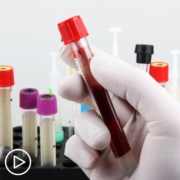
|
Transcript:
Every advanced prostate cancer patient is unique AND so is their disease. Advances in research are making personalized medicine a reality, tailoring care and therapy choices based on the genetic makeup and individual characteristics of a patient’s disease.
As prostate cancer research evolves and treatment options expand, it’s vital that patients work with their healthcare team to find the best treatment approach to treat their specific cancer.
An essential step to accessing personalized medicine is biomarker testing, which identifies key markers such as genes, proteins, or other molecules in a sample of tissue, blood, or other bodily fluid. The results of these tests can provide a fuller picture of the prostate cancer’s type, stage, and aggressiveness and may help predict how the cancer will behave.
The test results can also identify which treatment approach may be most effective, through the presence of certain molecular markers. For example, if a tumor has either high microsatellite instability (MSI high) or mismatch repair defects (dMMR), a prostate cancer patient may benefit from immunotherapy. Or a PARP inhibitor therapy may be more effective if the presence of mutations in certain DNA damage repair genes is detected.
In addition to biomarker test results, other factors that physicians consider when recommending a treatment approach include:
- A patient’s age, overall health, and any pre-existing conditions.
- The type, stage, and grade of prostate cancer.
- And, potential side effects or impact on their lifestyle.
- And, the patient’s preference.
Along with these considerations, it’s vital that patients discuss the benefits and drawbacks of each option with their team. So, how can you be proactive in order to access personalized care?
- Ensure that your doctor has experience treating prostate cancer. Consider consulting a specialist or obtaining a second opinion, so you can feel confident in your diagnosis and treatment plan.
- Ask a friend or loved to join you during key discussions with your provider, to help you process the information and to make decisions.
- And, be sure to request all essential testing, including biomarker testing, and ask how the results may affect your prognosis and treatment options.
- Discuss ALL of the treatments available to you, including any potential side effects.
- And ask if there is a clinical trial that could be right for you.
- Finally, and most importantly, YOU should be at the center of your prostate cancer care. Share your opinions and ask questions throughout the process, so you feel empowered and informed.
To learn more about prostate cancer and to access tools for self-advocacy, visit powerfulpatients.org/PC.
Newly Diagnosed With Follicular Lymphoma? Start Here
Newly Diagnosed with Follicular Lymphoma? Start Here from Patient Empowerment Network on Vimeo.
How are follicular lymphoma treatment options commonly explained to patients? Expert Dr. Sameh Gaballa shares how he walks patients through treatment options, POD24 and FLIPI tests that help guide treatment options, and follicular lymphoma staging.
Dr. Sameh Gaballa is a hematologist/oncologist specializing in treating lymphoid malignancies from Moffitt Cancer Center. Learn more about Dr. Gaballa.
See More from START HERE Follicular Lymphoma
Related Resources:
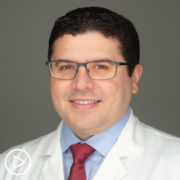
|

|

|
Transcript:
Lisa Hatfield:
So, Dr. Gaballa, let’s start here. How do you explain follicular lymphoma treatment options and prognosis to your newly diagnosed patients? And what does shared decision-making look like in your office?
Dr. Sameh Gaballa:
Oh, absolutely. So follicular lymphoma, you really have to explain to the patient what, how are we coming to the recommendation that we’re currently giving. So if we think this is, this patient is a good candidate for a watch-and-wait approach, for example, we really have to walk them through why that really is the best option and not why should we jump on treatments and vice versa, if we think this patient needs to be treated, how do we really…the patient really has to understand all the other treatment options and why this needs to be treated. Because a lot of patients initially, sometimes when you present them with a watch-and-wait approach, if they don’t know all the background, they might not feel very comfortable because they might think, “Well, I have this cancer in me, and we’re not doing anything about it, and that doesn’t really sound too…something I should be doing.”
But then when you explain to them, “Well, you see, you don’t have a lot of disease, those studies have already been done in the past where patients who were treated or not treated, the survival was the same, so there, you might get side effects from the treatment, but not necessarily have benefits. And in the future, should this need to be treated, we have a lot of things to do.” So, really, so this is kind of the shared decision portion where you just have to walk the patients through why that will be the best situation. There is data with single-agent rituximab (Rituxan), even in patients who are asymptomatic, and we have the UK data, and that’s an option.
And that is also offered to some of the patients, even if they’re not symptomatic and they don’t have a lot of disease, if that’s what really the patient wants, if they’re not really comfortable with a watch and wait. And there’s again some data to help justify that. Again, there’s no advantage in overall survival, but sometimes the patients would kind of feel more in control. They feel like, “Okay, I did something about it.” So that’s the shared approach.
In terms of your other question about prognosis, unfortunately that’s an area of an unmet need. I mean, we have some tools to help us differentiate follicular lymphoma patients from each other, which patient is high-risk, meaning those are the patients who might relapse quickly, or they might not respond well to treatments. Unfortunately, we don’t have great tools. We have something called a FLIPI score, which is, we use a number of parameters including clinical parameters like stage or age and some other parameters as well, and we have a scoring system. But it doesn’t 100 percent predict if this is going to be a high-risk follicular lymphoma or a low-risk.
Unfortunately, the best predictor of prognosis for follicular lymphoma, you would know about retrospectively, it’s something called POD24, progression of disease in 24 months. Meaning that if you have a patient who’s treated with chemotherapy and immune therapy, and then they go into remission, and then they relapse again in less than 24 months, progression of disease within 24 months, those are the, those represent about 20 percent of follicular lymphoma patients, and those represent a high-risk group of patients. That’s the best tool that we have. But unfortunately, if you’re diagnosed today, you’re not going to know if you’re in this group or not until you actually need to be treated and not just treated with immune therapy.
It has to be with chemotherapy as well. And then if you relapse within two years, then we know that this is a high-risk entity. There is genetic testing, there is something called a FLIPI-m7 scoring system. But again, these tools are not great to tease out the low risk from the high-risk follicular lymphoma patients. But 80 percent of patients who are not going to be POD24, meaning that they get treated, they’re in remission for two years or more, and actually those patients have very similar survival to the general population. So, yeah, so a lot of times we don’t know right away, but we do have some tools to kind of give us an idea.
Lisa Hatfield:
Great. Thank you for that information. It’s kind of hard for cancer patients to only know what their prognosis is retrospectively, but that’s a great explanation. Thank you. Okay, another patient question, “How does the staging of follicular lymphoma impact treatment choices?”
Dr. Sameh Gaballa:
Yeah, so as you saw, I didn’t really stress too much about staging, because it’s a blood disease. So the vast majority of patients are going to be what we call stage III to IV disease. So, obviously when you see a patient if if they, they might think that, “Oh my God, I have a stage III to IV cancer,” because that’s really what they’re familiar with. But follicular lymphoma is a blood disease, so by default it’s going to be in a lot of lymph nodes, it might be in the bone marrow as well, but stage III to IV disease follicular lymphoma doesn’t, that does not mean that this is a terminal cancer. Patients could live completely in normal life, even with a stage III to IV follicular lymphoma. This is not like a breast cancer or colon cancer where stage is everything.
But why do we have a staging system? Obviously, there’s a need to have staging system for all cancers, but clinically, the only time it makes a difference is there’s a small group of patients who have a truly stage I or II disease, meaning just one group of lymph nodes on one side of the diaphragm that may fit within one radiation field. So if you have someone who’s just coming in with one or a few groups of lymph nodes all in one place, we call that a stage I or II follicular lymphoma, not common, because again, most patients are stage III to IV. The only difference there is you can potentially offer those patients radiation therapy if it’s truly localized, but then you would need to do a bone marrow biopsy and confirm that it’s not in the bone marrow.
And if it is localized within one radiation field, that can be offered and we can sometimes give after radiation therapy, either observe it or consider giving rituximab afterwards. But that’s the only time where we’re going to mention staging, again, uncommon because most, the vast majority of patients are going to be stage III to IV. So why would we do that? Why would we irradiate if it’s only one group of lymph nodes? Because there’s about, I mean, if you irradiated, those lymph nodes will go away, but there’s about maybe a, it’s different. The number is different between studies, but about maybe a third of patients, if you irradiate that group of lymph nodes or one lymph node, it actually might not come again in the future. So you might have very long remissions/possible cure if you…and this is the only situation where we would consider treating someone who does not have symptoms, because you could have very long remissions with radiation.
Share Your Feedback:
Create your own user feedback survey
Thriving With AML | Advice for Setting Goals and Making Treatment Decisions
Thriving With AML | Advice for Setting Goals and Making Treatment Decisions from Patient Empowerment Network on Vimeo.
When facing an acute myeloid leukemia (AML) diagnosis, treatment decisions may feel overwhelming. AML specialist Dr. Alice Mims shares expert guidance for setting treatment goals with your team, advice for making care decisions, and explains how tests results may impact choices.
Dr. Alice Mims is a hematologist specializing in acute and chronic myeloid conditions. Dr. Mims serves as the Acute Leukemia Clinical Research Director at The Ohio State University Comprehensive Cancer Center – James. Learn more about Dr. Mims.
Related Resources:

|

|
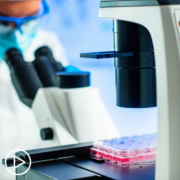
|
Transcript:
Katherine Banwell:
One part of thriving with AML is finding a treatment approach that manages your disease and fits with your lifestyle. Before we talk about therapy, can you tell us how treatment goals are established for an individual patient?
Dr. Alice Mims:
Sure. So, for individual patients, I think it’s very important that there is an initial discussion that doesn’t feel too shortened that you can have time with your care team to really go into depth about the diagnosis, about the specifics of your particular subtype of acute myeloid leukemia, understanding the treatment options, and then being given time allowed to reflect on all of that information. So, then you can come back and have your questions better answered that may come from that initial discussion.
And then help you with your team make a decision based on that information that works best for you.
Katherine Banwell:
Outside of patient preference, what other factors do you take into account when working with a patient to decide on a treatment plan?
Dr. Alice Mims:
Sure. So, there are multiple different factors that we try to take into account. Again, yeah, most importantly what patients’ goals are like you mentioned, but those include overall health, including different comorbidities, so what other healthcare diagnoses, medications are you taking, what are the patients’ age, thinking about that for long-term goals, overall support from loved ones, family to — just because care can be really involved. And then in particular, thinking about specific features of that individual patient’s AML, including molecular, genetic features of the leukemia.
Katherine Banwell:
Well, let’s talk more in depth about the test results you just mentioned.
What is the test for genetic markers? And how is it conducted?
Dr. Alice Mims:
So, there are a few different tests that we use under that scope of genetic markers. So, those include looking at chromosomal abnormalities of the DNA. So, with cytogenetics, and then also more specific prose where we call FISH testing. And then also we look for specific gene mutations through next-generation sequencing, or PCR testing. And so, we use all of those results together to give us the most information we can about that individual’s leukemia.
Katherine Banwell:
How has molecular testing revolutionized AML care?
Dr. Alice Mims:
Oh gracious. It’s really done such – so much for leukemia. And just things are so different even where they were five years ago because of having molecular mutations, that information available.
So, it helps with discussing prognosis. So, we know that different molecular features can tell us about curative intent and what are the treatment steps we would need to take to give the best chance long-term. And then also now, we’ve evolved to where we have directed therapies that can target mutations or the proteins that arise from those mutations with therapeutic options.
Katherine Banwell:
Is this testing standard following an AML diagnosis?
Dr. Alice Mims:
It is standard following an AML diagnosis. That’s recommended within all of the guidelines with patients and really should be done for all patients at initial diagnosis.
Katherine Banwell:
Can genetic markers or mutations change over time? For example, if a patient relapses, should molecular testing be done again?
Dr. Alice Mims:
Yes, absolutely. Mutations can evolve. It’s something we call clonal evolution of the leukemia.
And so you can have mutations that could be present at diagnosis that may no longer be present. Or the opposite can occur where you have new mutations that can appear. And that can lead to different options for treatment. So, it’s very important to retest at time of relapse.
Katherine Banwell:
What advice do you have for patients who want to ensure that they’ve actually undergone molecular testing? What questions should they be asking their healthcare team?
Dr. Alice Mims:
I think it’s definitely important to bring this up with the healthcare team. And it should be something at diagnosis and relapse to ask, what are the cytogenetics, what do they look like now, what do the gene mutations, and really as mentioned before, it’s so crucial in talking about prognosis, talking about treatment options that if it doesn’t come up, it’s really something that you should take a pause and try to go back to readdress with your team.
PODCAST: Managing Life With AML | What You Should Know About Care and Treatment
What do you need to know when it comes to managing life with acute myeloid leukemia (AML)? In this webinar, Dr. Alice Mims, an AML specialist and researcher, discusses how treatment decisions are made and how test results may impact therapy. Dr. Mims will shares the latest advances in research and key advice for living well with AML.
Dr. Alice Mims is a hematologist specializing in acute and chronic myeloid conditions. Dr. Mims serves as the Acute Leukemia Clinical Research Director at The Ohio State University Comprehensive Cancer Center – James. Learn more about Dr. Mims.
Transcript:
Katherine Banwell:
Hello, and welcome. I’m Katherine Banwell, your host for today. Today’s program is a continuation of our Thrive series. And we’re going to discuss navigating life with AML, and how you can engage in your care. Before we get into the discussion, please remember that this program is not a substitute for seeking medical advice. Please refer to your healthcare team about what might be best for you. Well, joining us today is Dr. Alice Mims.
Dr. Mims, welcome. Would you please introduce yourself?
Dr. Alice Mims:
Yeah, sure. Thank you, Katherine. I’m Alice Mims. I’m a physician and associate professor at Ohio State University. And also, the section head for the myeloid and acute leukemia program within our division of hematology.
Katherine Banwell:
Thank you so much for taking the time to join us today, Dr. Mims. We start all of our webinars in our thrive series with the same question; in your experience, what does it mean to thrive with AML?
Dr. Alice Mims:
Sure, I think that’s a great question. So, really for me, I think thriving with AML is very patient- or person-dependent. It really depends on making sure that your treatment goals align with your care. And so that means really being an active participant in your diagnosis, understanding the disease process, and making sure that your care team really understands what your overall goals are for your treatment.
Katherine Banwell:
Thank you for that because it helps us to understand as we move through the program today. One part of thriving with AML is finding a treatment approach that manages your disease and fits with your lifestyle. Before we talk about therapy, can you tell us how treatment goals are established for an individual patient?
Dr. Alice Mims:
Sure. So, for individual patients I think it’s very important that there is an initial discussion that doesn’t feel too shortened that you can have time with your care team to really go into depth about the diagnosis, about the specifics of your particular subtype of acute myeloid leukemia, understanding the treatment options, and then being given time allowed to reflect on all of that information. So, then you can come back and have your questions better answered that may come from that initial discussion.
And then help you with your team make a decision based on that information that works best for you.
Katherine Banwell:
Outside of patient preference, what other factors do you take into account when working with a patient to decide on a treatment plan?
Dr. Alice Mims:
Sure. So, there are multiple different factors that we try to take into account. Again, yeah most importantly what patients’ goals are like you mentioned, but those include overall health, including different comorbidities, so what other healthcare diagnoses, medications are you taking, what are the patient’s age, thinking about that for long-term goals, overall support from loved ones, family to — just because care can be really involved. And then in particular, thinking about specific features of that individual patient’s AML, including molecular, genetic features of the leukemia.
Katherine Banwell:
Well, let’s talk more in depth about the test results you just mentioned.
What is the test for genetic markers? And how is it conducted?
Dr. Alice Mims:
So, there are a few different tests that we use under that scope of genetic markers. So, those include looking at chromosomal abnormalities of the DNA. So, with cytogenetics, and then also more specific prose where we call FISH testing. And then also we look for specific gene mutations through next generation sequencing, or PCR testing. And so, we use all of those results together to give us the most information we can about that individual’s leukemia.
Katherine Banwell:
How has molecular testing revolutionized AML care?
Dr. Alice Mims:
Oh gracious. It’s really done such – so much for leukemia. And just things are so different even where they were five years ago because of having molecular mutations, that information available.
So, it helps with discussing prognosis. So, we know that different molecular features can tell us about curative intent and what are the treatment steps we would need to take to give the best chance long-term. And then also now, we’ve evolved to where we have directed therapies that can target mutations or the proteins that arise from those mutations with therapeutic options.
Katherine Banwell:
Is this testing standard following an AML diagnosis?
Dr. Alice Mims:
It is standard following an AML diagnosis. That’s recommended within all of the guidelines with patients and really should be done for all patients at initial diagnosis.
Katherine Banwell:
Can genetic markers or mutations change over time? For example, if a patient relapses, should molecular testing be done again?
Dr. Alice Mims:
Yes, absolutely. Mutations can evolve. It’s something we call clonal evolution of the leukemia.
And so you can have mutations that could be present at diagnosis that may no longer be present. Or the opposite can occur where you have new mutations that can appear. And that can lead to different options for treatment. So, it’s very important to retest at time of relapse.
Katherine Banwell:
What advice do you have for patients who want to ensure that they’ve actually undergone molecular testing? What questions should they be asking their healthcare team?
Dr. Alice Mims:
I think it’s definitely important to bring this up with the healthcare team. And it should be something at diagnosis and relapse to ask, what are the cytogenetics, what do they look like now, what do the gene mutations, and really as mentioned before, it’s so crucial in talking about prognosis, talking about treatment options that if it doesn’t come up, it’s really something that you should take a pause and try to go back to readdress with your team.
Katherine Banwell:
I’d like to move on to treatment now, Dr. Mims. And, of course, treatment takes place in phases for AML. The first is induction therapy. Can you start by defining induction therapy for our audience?
Dr. Alice Mims:
Sure. So, induction therapy is really terminology that we use to talk about initial therapy for someone with a new diagnosis. So, we can have intensive induction therapies, and non-intensive induction therapies. But the goal for either of those types of treatment is to get the leukemia into remission.
So, to talk about that in a little bit more detail, for intensive induction regimens, those typically involve cytotoxic chemotherapy. So, you may hear terminology like, “7 + 3 induction,” or “high-dose cytarabine regimens,” but those are typically more intensive regimens that we use that can have increased side effects but may be very important based off the type of acute leukemia.
And then for non-intensive based regimens, one of the standards has really evolved to be venetoclax (Venclexta) and azacitidine (Vidaza) as a non-intensive regimen that can work very well for a majority of patients. And there are some off shoots of that as well.
Katherine Banwell:
Okay. And when does stem cell transplant come into play?
Dr. Alice Mims:
Sure. So, stem cell transplant is something that we all think about at the beginning for anyone with a new diagnosis of acute myeloid leukemia where as we’re working to get back genomic information about the individual’s acute leukemia, we may go ahead and start looking for different donors, doing typing, just in case that’s something that we need as far as someone’s therapy.
But typically we reserve stem cell transplant for patients who have either intermediate or high-risk features of their AML. Or who may have even favorable respite are not responding as well as we would like when looking at the depth of remission. And so, we always want to be prepared in case that’s something we need to move forward with as part of their care, if the goal of their treatment is for curative intent.
Katherine Banwell:
Let’s talk about what happens after the initial phase of treatment. What’s the purpose of consolidation therapy?
Dr. Alice Mims:
Sure. So, there are a few different purposes we can use consolidation therapy for. So, for patients – consolidation therapy is used for patients who have achieved remission. And then it’s either to try to hopefully get them cure of their AML. The patients have more favorable risk features of their AML and cure is an option through just chemotherapy alone.
Or it can be used to try to keep people in remission while we’re working to get towards stem cell transplant as that can sometimes take a few months to get a donor ready, have things ready to move forward with transplant.
Katherine Banwell:
And what are the options for consolidation therapy?
Dr. Alice Mims:
Sure. So, options for consolidated chemotherapy are typically based off of what you had initially for induction chemotherapy. So, if it’s more intensive-based regimens, it typically is consolidation with intensive consolidation, cytarabine based regimens.
For lower intensity regimens, typically consolidation is more continuing therapy on what you started but may have adjustments of the treatment based off of trying to decrease the toxicity now that the patients are in remission.
Katherine Banwell:
And how are patients monitored in consolidation therapy?
Dr. Alice Mims:
Sure. So, it definitely is based off of the individual’s type of consolidation chemotherapy or treatment. But most patients, if we feel like the treatment is going to lower blood counts, they have bloodwork twice a week, and we’re watching for things, for side effects for treatment, looking out for risk of infection, giving transfusion support, and then if something happens that we feel like we can’t support patients in an outpatient setting, then we’ll get them back into the hospital if they need to for care.
Katherine Banwell:
What side effects are you looking for?
Dr. Alice Mims:
So, most of the side effects with any of the treatments that we give are what we call myelosuppressives. So, it lowers the different types of blood counts.
So, white blood cell count which increases risk of infection, red blood cells, so, side effects or symptoms from anemia. And then risk of bleeding from low platelet counts.
Katherine Banwell:
Okay. Maintenance therapy has become more common in other blood cancers particularly in multiple myeloma. Is there a role for maintenance therapy in AML?
Dr. Alice Mims:
There actually is now, which is something that’s newer that has evolved for acute myeloma leukemia. So, in the context of intensive therapy, we now have oral azacitidine (Onureg), which is a little bit different than some of the IV formulations that we give.
But for patients who receive intensive induction therapy, get into remission and may receive consolidation but are not able to go onto transplant if they have that immediate or higher risk features, there’s FDA approval for oral azacytidine, which has been shown to improve overall survival and keep people in those remissions for longer.
More recently, specifically for patients who have a particular type of mutation called FLT3, if they also receive intensive induction therapy with a FLT3 inhibitor added onto that, then their quizartinib was just recently approved as a maintenance therapy for patients with that particular type of AML.
Katherine Banwell:
Are there emerging AML therapies that patients should know about other than what you just mentioned?
Dr. Alice Mims:
Sure. So, I think there are a lot of exciting treatments that are up and coming based off of many small molecule inhibitors that are being studied.
One in particular I would mention that everyone’s very excited about is a class of agents called menin inhibitors.
And so that’s an oral agent that has been shown to have responses for patients with relapse or refractory AML who have NMP-1 mutations or have something called KNT2A rearrangements. And seeing responses with just a single agent in the relapse refractory setting, it’s been really exciting. And so, I think we’re hopeful that that may become FDA-approved in the near future. And it’s also now being explored in combination with intensive chemotherapies as well as less intensive induction regimens. And so, maybe we can do a better job without brunt treatment by adding these therapies on.
Katherine Banwell:
That’s exciting news. When it comes to living and thriving with AML, Dr. Mims, managing disease symptoms and treatment side effects is a big part of that.
Would you talk about how symptoms and side effects can impact life with AML?
Dr. Alice Mims:
Sure. So, I think from my perspective, what we are always trying to do when we’re moving forward with a treatment plan is of course, get patients into remission, but the purpose of getting into remission is not just to achieve that, but for patients to have quality of life. And so, there needs to be continued dialogue between the patient and the treatment team about how you’re feeling during treatment. Because they’re definitely based off of therapy, different side effects, things that could be not necessarily due to active leukemia anymore. And so there may need to be dose adjustments and other things that we do to the regimens in order to make you feel as good as possible while continuing on treatment.
Katherine Banwell:
Why is it so important for patients to speak up about any issues they may be having?
Dr. Alice Mims:
I think it’s important because you’re your own best advocate. Being the patient, being the person who’s living with having this diagnosis and going through the treatment, myself, or other colleagues as physicians, we can have a sense of what may be going on based off of numbers. But we’re not truly going to know how you’re feeling unless you speak up and let us know. And there may be things we could do with supportive medications, dosing adjustments as mentioned, that could help in making you hopefully feel better and less side effects and toxicities from treatment.
Katherine Banwell:
What are some common symptoms and side effects that you hear about?
Dr. Alice Mims:
Okay. Sure. So, different side effects that I would say that people can have, people can feel fatigued just from treatment in general. Some of our therapies can cause neuropathy, skin rashes, nausea, vomiting, diarrhea. And so, all of those are important along as mentioned with symptoms you may have from decreased blood counts that we do have interventions that we could implement to help the – make the therapy more tolerable.
Katherine Banwell:
So, for the side effects like fatigue for example, what do you do about that?
Dr. Alice Mims:
So, I think it depends on the level of fatigue. Of course, we don’t have – I wish we had a pill that could just make fatigue improve. But if it’s really that the treatment is deriving it, and it’s impeding your quality of life there are dose reductions or things we can do that may help with the level of fatigue you’re experiencing.
Katherine Banwell:
And what about some of the other side effects. You mentioned diarrhea.
Dr. Alice Mims:
Sure.
Katherine Banwell:
How is that handled?
Dr. Alice Mims:
Yeah. So, for issues from GI complications such as nausea, vomiting, diarrhea, we have really lots of choices for anti-nausea medicines and different combinations we can use or newer antiemetics that can help with that. And from a diarrhea perspective it depends on the treatment. But of course, we want to make sure first and foremost there’s no infection. And if not, then there are good antidiarrheals we could add on to the regiment to help with that as well.
Katherine Banwell:
Okay. That’s great advice. Thank you. I want to make sure that we get to some of the audience questions. These were sent to us in advance of the program today. Let’s start with this one; Janet wants to know what factors enable a patient to achieve and continue in remission if they are not able to achieve stem cell transplant due to age restrictions.
Dr. Alice Mims:
So, I think first and foremost, I think it’s very important that there — that patients are aware that there shouldn’t be just strict, stringent cutoffs of age as a requirement for stem cell transplant. And really, there’s a lot of research going on that we should take into account. Physiological age, and there’s ways to measure that just to be sure that stem cell transplant really is not an option. And for patients who stem cell transplant is not an option, I think as we talked about earlier, so there can still be really great treatments that can get patients into remission and ongoing therapies with dosing adjustments again to decrease toxicity and improve quality of life and thinking about things like maintenance therapy as appropriate.
Katherine Banwell:
What are the age restrictions, and why are they there?
Dr. Alice Mims:
So, sometimes you will hear age 75.
Really, no one above age 75 should move forward with transplant. And that’s based off of past data where they’ve explored transplant and seen increased toxicity. And from transplant in itself, increased side effects, increased risk of early mortality. And so, I do think it’s important to take the patient as a whole into consideration because again, you could have someone who’s 77 who may be running marathons, and in great shape, and not a lot of other healthcare issues, who may still do really well with treatment. And so, I think that’s – really needs to be taken in account, really the overall picture of health for the patient before making…
Katherine Banwell:
So, the…
Dr. Alice Mims:
…just a firm cutoff.
Katherine Banwell:
Right. Okay. So, it’s not cut and dry.
Dr. Alice Mims:
Exactly.
Katherine Banwell:
If you’re 75 or older, then you definitely can’t have stem cell transplant.
Dr. Alice Mims:
That’s correct.
Katherine Banwell:
Then you’re looking at everyone individually.
Dr. Alice Mims:
Yeah. So, it really should be looked at.
And I still have some patients who will come to me and say, “Oh, I was told I’m 68 years old, I’m not a candidate.” And that always makes me take a step back. And then we kind of have to have that discussion again. And they may still not be a good candidate based off of other comorbidities or healthcare issues, but it shouldn’t just be a number rules you out for having that as an option.
Katherine Banwell:
Good to know. We received this question from Carl, “What does treatment look like following transplant? And what are doctors looking for when monitoring through blood tests?”
Dr. Alice Mims:
Sure. So, after transplant, the first three months is pretty intensive of being seen very frequently at your transplant center twice to once a week. You’re also on immunosuppressive medications to try to help prevent issues like graft vs host disease, which can be a complication from transplant.
And then over time if you’re doing well, we try to start tapering off those immunosuppressive regimens to see if you can tolerate that. And what I say to most of my patients for – who are undergoing transplant, it can take some time to really feel back to being yourself. It can take six months, it can take a year or longer. And sometimes your normal is a new normal based off of how you do and the side effects of the transplant in itself. So, you may not go back to if you’re here before transplant and before your diagnosis, it may be that this is your new normal. Just so people can be prepared and know what they’re signing up for.
Katherine Banwell:
And with the blood testing, what are you looking for when you’re monitoring a patient?
Dr. Alice Mims:
Sure. There are a few different things that we’re looking for when monitoring patients. So, one, making sure that the stem cells or the graft from the donor are recovering.
You want to see that blood counts, levels of white blood cells, red blood cells, platelets are getting to normal levels. You’re also assessing and making sure you’re not seeing signs of relapse. You’re checking levels of donor cells versus the patient cells within the stem cell — sorry, within the stem cell compartments. And so, we’re taking all of those into account as well as checking organ function and making sure there’s no signs of potential graft versus host disease as well.
Katherine Banwell:
Katrina sent in this question; do you have any advice for dealing with a general oncologist who does not exactly follow my AML doctor’s recommendations? I see a local oncologist and an AML specialist guides my care.
Dr. Alice Mims:
I think that’s a tough question. And so, I think I’ll answer that if – maybe two different ways.
So, one, I think sometimes it’s hard when you’re the local community oncologist, and you’re there for the day-to-day care. And so there may need to be treatment adjustments and other things that you need to do in that moment or time to help make sure that toxicities are not too severe or are helping the patient as you’re seeing them day-to-day. And it may not be easy to involve the specialist right there in the moment. But I think if there are bigger issues as far as overall goals, overall communication, it should be that both are able to communicate well with each other. They should be able to communicate via email, via text message. That’s what I do with a lot of my community partners. And it’s always important that you as a patient feel confident in your care. And so, if that trust is not there that things are being followed, then it may be important to look and see if there’s another physician who you do feel comfortable with proceeding with your care with.
Katherine Banwell:
And what do you tell patients when they’re not feeling comfortable with their care team or their oncologist or their general oncologist? What do you say to them to give them some confidence to find somebody else who they feel more comfortable with?
Dr. Alice Mims:
Sure. So, I’ll just say from my perspective. So, if I’m seeing a patient and they may have questions, they may not feel comfortable, they may need more time. And I always think it’s important if you want a second opinion, whether it’s at a specialist level, whether it’s in a community oncology private setting, that should not be offensive to the physician.
If that makes the patient feel more comfortable in what they’re doing with their care, that’s how they should move forward. And it should be what they feel like is best. If a physician takes that personally or is offended by it, I think that’s more of their problem as opposed to anything that you’re doing wrong.
Katherine Banwell:
Okay. Thank you for that. Ryan wants to know; I’m a year and a half post-transplant, how can you tell if the aches and pains in your joints are normal aging, host vs graft disease, the AML returning, or even something else?
Dr. Alice Mims:
So, I think that’s also a difficult question to answer because it really is patient dependent. And so, I think if you’re having new joint aches or pains, it’s always important to reach out to your transplant team to make sure that – it could be any of the above..
And so you’re doing the appropriate workup with lab work, imaging, things that would be appropriate or seeing certain specialists. Maybe orthopedist if needed because it could be I’d say less likely leukemic relapse, but still want to be sure. But it could be definitely complications from GVHD or there’s some joint issues that can evolve post-transplant, especially for people who are on long-term immunosuppressant medications. Or it could be the normal effects of aging. So, it’s always good to have that reassurance.
Katherine Banwell:
Let’s talk a little bit about mental health resources. Managing the worry associated with a diagnosis or concerns about relapse, or even various side effects can lead to emotional symptoms like anxiety and fear.
Why is it important for people with AML to share how they’re feeling with their healthcare team?
Dr. Alice Mims:
So, I think it’s very important because, one, all of those feelings are normal feelings. I think they’re sometimes that from going through such a rapid diagnosis and then having to start treatment pretty quickly and going through all the ups and downs with these types of diagnosis can really lead to for some patients PTSD-type symptoms. And then there are also things that can evolve over time where their anxiety or even survivorship guilt as you go if you move forward and are doing well where you may have some friends or people you met along the way who may not have had as good outcomes. And so, there are resources available based off of where you are.
But for survivorship, oncology specific counseling to deal with some of these feelings that are understandable and normal for what patients have been through.
Katherine Banwell:
Can a social worker help? And are there other people on the healthcare team who can support a patient’s emotional needs?
Dr. Alice Mims:
Oh, absolutely. So, I think it’s really place-dependent on where you are but yes, absolutely. Social workers are a great resource for patients. There may be other collaborative teams based off of where you’re receiving your treatment that may be available that are maybe patient support groups where you can go and be with other patients or Facebook, social media support groups. And I think all those can be very helpful. And I know at least at our center, we also have patient mentors who have been through and gotten through to the other side of transplant or whatnot who are great resources because they’ve lived and experienced it.
And I think that’s just as a physician, I can talk about things that I don’t have that personal experience having lived through it. And I think that’s very important —
Katherine Banwell:
Yeah. It’s a…
Dr. Alice Mims:
…to be able to have somebody to talk to. Yeah.
Katherine Banwell:
Yeah. What about the financial aspect of treatments? There are many people who would find it difficult to find and maybe they don’t have insurance, or their insurance doesn’t cover a lot. How do you help patients who are dealing with financial restrictions?
Dr. Alice Mims:
Sure. So, I think that we’re fortunate here because we have a lot of support staff to help patients with our financial counseling team. We also have people within the medication assistance programs who can help find foundation grants to help with medication support, travel support.
I think for patients who may not have those things available at their individual center, The Leukemia & Lymphoma Society is a great place to reach out for.
And there are other foundations as well who at least may have navigators to help patients figure out other resources or funding available.
Katherine Banwell:
Yeah. Okay. That’s really good information, Dr. Mims. Thank you. And please continue to send in your questions to question@powerfulpatients.org and we’ll work to get them answered on future programs. Well, Dr. Mims as we close out our program, I wanted to get your thoughts on where we stand with progress in AML care. Are there advances in research treatment that you’re hopeful about?
Dr. Alice Mims:
Yes. I would say from even when I finished fellowship 10 years ago, not to state my age, but we had essentially about three treatments at that time.
Now in the past five years there have been I think maybe 11 different new drugs that have been approved for a acute myeloma leukemia. And so, I think we’re just on the precipice of really evolving to have individualized care. Hopefully have more curative options for patients. So, I’m really excited for the time we’re in right now where I even hope we’ll be in the next five years for patients.
Katherine Banwell:
That’s an encouraging message to leave the audience with, Dr. Mims. Thank you so much for joining us today.
Dr. Alice Mims:
Thank you so much for letting me be here with you today.
Katherine Banwell:
And thank you to all of our collaborators. To learn more about AML and to access tools to help you become a proactive patient, visit powerfulpatients.org. I’m Katherine Banwell. Thanks for joining us today.
Managing Life With AML | What You Should Know About Care and Treatment
Managing Life With AML | What You Should Know About Care and Treatment from Patient Empowerment Network on Vimeo.
What do you need to know when it comes to managing life with acute myeloid leukemia (AML)? In this webinar, Dr. Alice Mims, an AML specialist and researcher, discusses how treatment decisions are made and how test results may impact therapy. Dr. Mims will shares the latest advances in research and key advice for living well with AML.
Dr. Alice Mims is a hematologist specializing in acute and chronic myeloid conditions. Dr. Mims serves as the Acute Leukemia Clinical Research Director at The Ohio State University Comprehensive Cancer Center – James. Learn more about Dr. Mims.
Related Resources:

|

|

|
Transcript:
Katherine Banwell:
Hello, and welcome. I’m Katherine Banwell, your host for today. Today’s program is a continuation of our Thrive series. And we’re going to discuss navigating life with AML, and how you can engage in your care. Before we get into the discussion, please remember that this program is not a substitute for seeking medical advice. Please refer to your healthcare team about what might be best for you. Well, joining us today is Dr. Alice Mims.
Dr. Mims, welcome. Would you please introduce yourself?
Dr. Alice Mims:
Yeah, sure. Thank you, Katherine. I’m Alice Mims. I’m a physician and associate professor at Ohio State University. And also, the section head for the myeloid and acute leukemia program within our division of hematology.
Katherine Banwell:
Thank you so much for taking the time to join us today, Dr. Mims. We start all of our webinars in our thrive series with the same question; in your experience, what does it mean to thrive with AML?
Dr. Alice Mims:
Sure, I think that’s a great question. So, really for me, I think thriving with AML is very patient- or person-dependent. It really depends on making sure that your treatment goals align with your care. And so that means really being an active participant in your diagnosis, understanding the disease process, and making sure that your care team really understands what your overall goals are for your treatment.
Katherine Banwell:
Thank you for that because it helps us to understand as we move through the program today. One part of thriving with AML is finding a treatment approach that manages your disease and fits with your lifestyle. Before we talk about therapy, can you tell us how treatment goals are established for an individual patient?
Dr. Alice Mims:
Sure. So, for individual patients I think it’s very important that there is an initial discussion that doesn’t feel too shortened that you can have time with your care team to really go into depth about the diagnosis, about the specifics of your particular subtype of acute myeloid leukemia, understanding the treatment options, and then being given time allowed to reflect on all of that information. So, then you can come back and have your questions better answered that may come from that initial discussion.
And then help you with your team make a decision based on that information that works best for you.
Katherine Banwell:
Outside of patient preference, what other factors do you take into account when working with a patient to decide on a treatment plan?
Dr. Alice Mims:
Sure. So, there are multiple different factors that we try to take into account. Again, yeah most importantly what patients’ goals are like you mentioned, but those include overall health, including different comorbidities, so what other healthcare diagnoses, medications are you taking, what are the patient’s age, thinking about that for long-term goals, overall support from loved ones, family to — just because care can be really involved. And then in particular, thinking about specific features of that individual patient’s AML, including molecular, genetic features of the leukemia.
Katherine Banwell:
Well, let’s talk more in depth about the test results you just mentioned.
What is the test for genetic markers? And how is it conducted?
Dr. Alice Mims:
So, there are a few different tests that we use under that scope of genetic markers. So, those include looking at chromosomal abnormalities of the DNA. So, with cytogenetics, and then also more specific prose where we call FISH testing. And then also we look for specific gene mutations through next generation sequencing, or PCR testing. And so, we use all of those results together to give us the most information we can about that individual’s leukemia.
Katherine Banwell:
How has molecular testing revolutionized AML care?
Dr. Alice Mims:
Oh gracious. It’s really done such – so much for leukemia. And just things are so different even where they were five years ago because of having molecular mutations, that information available.
So, it helps with discussing prognosis. So, we know that different molecular features can tell us about curative intent and what are the treatment steps we would need to take to give the best chance long-term. And then also now, we’ve evolved to where we have directed therapies that can target mutations or the proteins that arise from those mutations with therapeutic options.
Katherine Banwell:
Is this testing standard following an AML diagnosis?
Dr. Alice Mims:
It is standard following an AML diagnosis. That’s recommended within all of the guidelines with patients and really should be done for all patients at initial diagnosis.
Katherine Banwell:
Can genetic markers or mutations change over time? For example, if a patient relapses, should molecular testing be done again?
Dr. Alice Mims:
Yes, absolutely. Mutations can evolve. It’s something we call clonal evolution of the leukemia.
And so you can have mutations that could be present at diagnosis that may no longer be present. Or the opposite can occur where you have new mutations that can appear. And that can lead to different options for treatment. So, it’s very important to retest at time of relapse.
Katherine Banwell:
What advice do you have for patients who want to ensure that they’ve actually undergone molecular testing? What questions should they be asking their healthcare team?
Dr. Alice Mims:
I think it’s definitely important to bring this up with the healthcare team. And it should be something at diagnosis and relapse to ask, what are the cytogenetics, what do they look like now, what do the gene mutations, and really as mentioned before, it’s so crucial in talking about prognosis, talking about treatment options that if it doesn’t come up, it’s really something that you should take a pause and try to go back to readdress with your team.
Katherine Banwell:
I’d like to move on to treatment now, Dr. Mims. And, of course, treatment takes place in phases for AML. The first is induction therapy. Can you start by defining induction therapy for our audience?
Dr. Alice Mims:
Sure. So, induction therapy is really terminology that we use to talk about initial therapy for someone with a new diagnosis. So, we can have intensive induction therapies, and non-intensive induction therapies. But the goal for either of those types of treatment is to get the leukemia into remission.
So, to talk about that in a little bit more detail, for intensive induction regimens, those typically involve cytotoxic chemotherapy. So, you may hear terminology like, “7 + 3 induction,” or “high-dose cytarabine regimens,” but those are typically more intensive regimens that we use that can have increased side effects but may be very important based off the type of acute leukemia.
And then for non-intensive based regimens, one of the standards has really evolved to be venetoclax (Venclexta) and azacitidine (Vidaza) as a non-intensive regimen that can work very well for a majority of patients. And there are some off shoots of that as well.
Katherine Banwell:
Okay. And when does stem cell transplant come into play?
Dr. Alice Mims:
Sure. So, stem cell transplant is something that we all think about at the beginning for anyone with a new diagnosis of acute myeloid leukemia where as we’re working to get back genomic information about the individual’s acute leukemia, we may go ahead and start looking for different donors, doing typing, just in case that’s something that we need as far as someone’s therapy.
But typically we reserve stem cell transplant for patients who have either intermediate or high-risk features of their AML. Or who may have even favorable respite are not responding as well as we would like when looking at the depth of remission. And so, we always want to be prepared in case that’s something we need to move forward with as part of their care, if the goal of their treatment is for curative intent.
Katherine Banwell:
Let’s talk about what happens after the initial phase of treatment. What’s the purpose of consolidation therapy?
Dr. Alice Mims:
Sure. So, there are a few different purposes we can use consolidation therapy for. So, for patients – consolidation therapy is used for patients who have achieved remission. And then it’s either to try to hopefully get them cure of their AML. The patients have more favorable risk features of their AML and cure is an option through just chemotherapy alone.
Or it can be used to try to keep people in remission while we’re working to get towards stem cell transplant as that can sometimes take a few months to get a donor ready, have things ready to move forward with transplant.
Katherine Banwell:
And what are the options for consolidation therapy?
Dr. Alice Mims:
Sure. So, options for consolidated chemotherapy are typically based off of what you had initially for induction chemotherapy. So, if it’s more intensive-based regimens, it typically is consolidation with intensive consolidation, cytarabine based regimens.
For lower intensity regimens, typically consolidation is more continuing therapy on what you started but may have adjustments of the treatment based off of trying to decrease the toxicity now that the patients are in remission.
Katherine Banwell:
And how are patients monitored in consolidation therapy?
Dr. Alice Mims:
Sure. So, it definitely is based off of the individual’s type of consolidation chemotherapy or treatment. But most patients, if we feel like the treatment is going to lower blood counts, they have bloodwork twice a week, and we’re watching for things, for side effects for treatment, looking out for risk of infection, giving transfusion support, and then if something happens that we feel like we can’t support patients in an outpatient setting, then we’ll get them back into the hospital if they need to for care.
Katherine Banwell:
What side effects are you looking for?
Dr. Alice Mims:
So, most of the side effects with any of the treatments that we give are what we call myelosuppressives. So, it lowers the different types of blood counts.
So, white blood cell count which increases risk of infection, red blood cells, so, side effects or symptoms from anemia. And then risk of bleeding from low platelet counts.
Katherine Banwell:
Okay. Maintenance therapy has become more common in other blood cancers particularly in multiple myeloma. Is there a role for maintenance therapy in AML?
Dr. Alice Mims:
There actually is now, which is something that’s newer that has evolved for acute myeloma leukemia. So, in the context of intensive therapy, we now have oral azacitidine (Onureg), which is a little bit different than some of the IV formulations that we give.
But for patients who receive intensive induction therapy, get into remission and may receive consolidation but are not able to go onto transplant if they have that immediate or higher risk features, there’s FDA approval for oral azacytidine, which has been shown to improve overall survival and keep people in those remissions for longer.
More recently, specifically for patients who have a particular type of mutation called FLT3, if they also receive intensive induction therapy with a FLT3 inhibitor added onto that, then their quizartinib was just recently approved as a maintenance therapy for patients with that particular type of AML.
Katherine Banwell:
Are there emerging AML therapies that patients should know about other than what you just mentioned?
Dr. Alice Mims:
Sure. So, I think there are a lot of exciting treatments that are up and coming based off of many small molecule inhibitors that are being studied.
One in particular I would mention that everyone’s very excited about is a class of agents called menin inhibitors.
And so that’s an oral agent that has been shown to have responses for patients with relapse or refractory AML who have NMP-1 mutations or have something called KNT2A rearrangements. And seeing responses with just a single agent in the relapse refractory setting, it’s been really exciting. And so, I think we’re hopeful that that may become FDA-approved in the near future. And it’s also now being explored in combination with intensive chemotherapies as well as less intensive induction regimens. And so, maybe we can do a better job without brunt treatment by adding these therapies on.
Katherine Banwell:
That’s exciting news. When it comes to living and thriving with AML, Dr. Mims, managing disease symptoms and treatment side effects is a big part of that.
Would you talk about how symptoms and side effects can impact life with AML?
Dr. Alice Mims:
Sure. So, I think from my perspective, what we are always trying to do when we’re moving forward with a treatment plan is of course, get patients into remission, but the purpose of getting into remission is not just to achieve that, but for patients to have quality of life. And so, there needs to be continued dialogue between the patient and the treatment team about how you’re feeling during treatment. Because they’re definitely based off of therapy, different side effects, things that could be not necessarily due to active leukemia anymore. And so there may need to be dose adjustments and other things that we do to the regimens in order to make you feel as good as possible while continuing on treatment.
Katherine Banwell:
Why is it so important for patients to speak up about any issues they may be having?
Dr. Alice Mims:
I think it’s important because you’re your own best advocate. Being the patient, being the person who’s living with having this diagnosis and going through the treatment, myself, or other colleagues as physicians, we can have a sense of what may be going on based off of numbers. But we’re not truly going to know how you’re feeling unless you speak up and let us know. And there may be things we could do with supportive medications, dosing adjustments as mentioned, that could help in making you hopefully feel better and less side effects and toxicities from treatment.
Katherine Banwell:
What are some common symptoms and side effects that you hear about?
Dr. Alice Mims:
Okay. Sure. So, different side effects that I would say that people can have, people can feel fatigued just from treatment in general. Some of our therapies can cause neuropathy, skin rashes, nausea, vomiting, diarrhea. And so, all of those are important along as mentioned with symptoms you may have from decreased blood counts that we do have interventions that we could implement to help the – make the therapy more tolerable.
Katherine Banwell:
So, for the side effects like fatigue for example, what do you do about that?
Dr. Alice Mims:
So, I think it depends on the level of fatigue. Of course, we don’t have – I wish we had a pill that could just make fatigue improve. But if it’s really that the treatment is deriving it, and it’s impeding your quality of life there are dose reductions or things we can do that may help with the level of fatigue you’re experiencing.
Katherine Banwell:
And what about some of the other side effects. You mentioned diarrhea.
Dr. Alice Mims:
Sure.
Katherine Banwell:
How is that handled?
Dr. Alice Mims:
Yeah. So, for issues from GI complications such as nausea, vomiting, diarrhea, we have really lots of choices for anti-nausea medicines and different combinations we can use or newer antiemetics that can help with that. And from a diarrhea perspective it depends on the treatment. But of course, we want to make sure first and foremost there’s no infection. And if not, then there are good antidiarrheals we could add on to the regiment to help with that as well.
Katherine Banwell:
Okay. That’s great advice. Thank you. I want to make sure that we get to some of the audience questions. These were sent to us in advance of the program today. Let’s start with this one; Janet wants to know what factors enable a patient to achieve and continue in remission if they are not able to achieve stem cell transplant due to age restrictions.
Dr. Alice Mims:
So, I think first and foremost, I think it’s very important that there — that patients are aware that there shouldn’t be just strict, stringent cutoffs of age as a requirement for stem cell transplant. And really, there’s a lot of research going on that we should take into account. Physiological age, and there’s ways to measure that just to be sure that stem cell transplant really is not an option. And for patients who stem cell transplant is not an option, I think as we talked about earlier, so there can still be really great treatments that can get patients into remission and ongoing therapies with dosing adjustments again to decrease toxicity and improve quality of life and thinking about things like maintenance therapy as appropriate.
Katherine Banwell:
What are the age restrictions, and why are they there?
Dr. Alice Mims:
So, sometimes you will hear age 75.
Really, no one above age 75 should move forward with transplant. And that’s based off of past data where they’ve explored transplant and seen increased toxicity. And from transplant in itself, increased side effects, increased risk of early mortality. And so, I do think it’s important to take the patient as a whole into consideration because again, you could have someone who’s 77 who may be running marathons, and in great shape, and not a lot of other healthcare issues, who may still do really well with treatment. And so, I think that’s – really needs to be taken in account, really the overall picture of health for the patient before making…
Katherine Banwell:
So, the…
Dr. Alice Mims:
…just a firm cutoff.
Katherine Banwell:
Right. Okay. So, it’s not cut and dry.
Dr. Alice Mims:
Exactly.
Katherine Banwell:
If you’re 75 or older, then you definitely can’t have stem cell transplant.
Dr. Alice Mims:
That’s correct.
Katherine Banwell:
Then you’re looking at everyone individually.
Dr. Alice Mims:
Yeah. So, it really should be looked at.
And I still have some patients who will come to me and say, “Oh, I was told I’m 68 years old, I’m not a candidate.” And that always makes me take a step back. And then we kind of have to have that discussion again. And they may still not be a good candidate based off of other comorbidities or healthcare issues, but it shouldn’t just be a number rules you out for having that as an option.
Katherine Banwell:
Good to know. We received this question from Carl, “What does treatment look like following transplant? And what are doctors looking for when monitoring through blood tests?”
Dr. Alice Mims:
Sure. So, after transplant, the first three months is pretty intensive of being seen very frequently at your transplant center twice to once a week. You’re also on immunosuppressive medications to try to help prevent issues like graft vs host disease, which can be a complication from transplant.
And then over time if you’re doing well, we try to start tapering off those immunosuppressive regimens to see if you can tolerate that. And what I say to most of my patients for – who are undergoing transplant, it can take some time to really feel back to being yourself. It can take six months, it can take a year or longer. And sometimes your normal is a new normal based off of how you do and the side effects of the transplant in itself. So, you may not go back to if you’re here before transplant and before your diagnosis, it may be that this is your new normal. Just so people can be prepared and know what they’re signing up for.
Katherine Banwell:
And with the blood testing, what are you looking for when you’re monitoring a patient?
Dr. Alice Mims:
Sure. There are a few different things that we’re looking for when monitoring patients. So, one, making sure that the stem cells or the graft from the donor are recovering.
You want to see that blood counts, levels of white blood cells, red blood cells, platelets are getting to normal levels. You’re also assessing and making sure you’re not seeing signs of relapse. You’re checking levels of donor cells versus the patient cells within the stem cell — sorry, within the stem cell compartments. And so, we’re taking all of those into account as well as checking organ function and making sure there’s no signs of potential graft versus host disease as well.
Katherine Banwell:
Katrina sent in this question; do you have any advice for dealing with a general oncologist who does not exactly follow my AML doctor’s recommendations? I see a local oncologist and an AML specialist guides my care.
Dr. Alice Mims:
I think that’s a tough question. And so, I think I’ll answer that if – maybe two different ways.
So, one, I think sometimes it’s hard when you’re the local community oncologist, and you’re there for the day-to-day care. And so there may need to be treatment adjustments and other things that you need to do in that moment or time to help make sure that toxicities are not too severe or are helping the patient as you’re seeing them day-to-day. And it may not be easy to involve the specialist right there in the moment. But I think if there are bigger issues as far as overall goals, overall communication, it should be that both are able to communicate well with each other. They should be able to communicate via email, via text message. That’s what I do with a lot of my community partners. And it’s always important that you as a patient feel confident in your care. And so, if that trust is not there that things are being followed, then it may be important to look and see if there’s another physician who you do feel comfortable with proceeding with your care with.
Katherine Banwell:
And what do you tell patients when they’re not feeling comfortable with their care team or their oncologist or their general oncologist? What do you say to them to give them some confidence to find somebody else who they feel more comfortable with?
Dr. Alice Mims:
Sure. So, I’ll just say from my perspective. So, if I’m seeing a patient and they may have questions, they may not feel comfortable, they may need more time. And I always think it’s important if you want a second opinion, whether it’s at a specialist level, whether it’s in a community oncology private setting, that should not be offensive to the physician.
If that makes the patient feel more comfortable in what they’re doing with their care, that’s how they should move forward. And it should be what they feel like is best. If a physician takes that personally or is offended by it, I think that’s more of their problem as opposed to anything that you’re doing wrong.
Katherine Banwell:
Okay. Thank you for that. Ryan wants to know; I’m a year and a half post-transplant, how can you tell if the aches and pains in your joints are normal aging, host vs graft disease, the AML returning, or even something else?
Dr. Alice Mims:
So, I think that’s also a difficult question to answer because it really is patient dependent. And so, I think if you’re having new joint aches or pains, it’s always important to reach out to your transplant team to make sure that – it could be any of the above..
And so you’re doing the appropriate workup with lab work, imaging, things that would be appropriate or seeing certain specialists. Maybe orthopedist if needed because it could be I’d say less likely leukemic relapse, but still want to be sure. But it could be definitely complications from GVHD or there’s some joint issues that can evolve post-transplant, especially for people who are on long-term immunosuppressant medications. Or it could be the normal effects of aging. So, it’s always good to have that reassurance.
Katherine Banwell:
Let’s talk a little bit about mental health resources. Managing the worry associated with a diagnosis or concerns about relapse, or even various side effects can lead to emotional symptoms like anxiety and fear.
Why is it important for people with AML to share how they’re feeling with their healthcare team?
Dr. Alice Mims:
So, I think it’s very important because, one, all of those feelings are normal feelings. I think they’re sometimes that from going through such a rapid diagnosis and then having to start treatment pretty quickly and going through all the ups and downs with these types of diagnosis can really lead to for some patients PTSD-type symptoms. And then there are also things that can evolve over time where their anxiety or even survivorship guilt as you go if you move forward and are doing well where you may have some friends or people you met along the way who may not have had as good outcomes. And so, there are resources available based off of where you are.
But for survivorship, oncology specific counseling to deal with some of these feelings that are understandable and normal for what patients have been through.
Katherine Banwell:
Can a social worker help? And are there other people on the healthcare team who can support a patient’s emotional needs?
Dr. Alice Mims:
Oh, absolutely. So, I think it’s really place-dependent on where you are but yes, absolutely. Social workers are a great resource for patients. There may be other collaborative teams based off of where you’re receiving your treatment that may be available that are maybe patient support groups where you can go and be with other patients or Facebook, social media support groups. And I think all those can be very helpful. And I know at least at our center, we also have patient mentors who have been through and gotten through to the other side of transplant or whatnot who are great resources because they’ve lived and experienced it.
And I think that’s just as a physician, I can talk about things that I don’t have that personal experience having lived through it. And I think that’s very important —
Katherine Banwell:
Yeah. It’s a…
Dr. Alice Mims:
…to be able to have somebody to talk to. Yeah.
Katherine Banwell:
Yeah. What about the financial aspect of treatments? There are many people who would find it difficult to find and maybe they don’t have insurance, or their insurance doesn’t cover a lot. How do you help patients who are dealing with financial restrictions?
Dr. Alice Mims:
Sure. So, I think that we’re fortunate here because we have a lot of support staff to help patients with our financial counseling team. We also have people within the medication assistance programs who can help find foundation grants to help with medication support, travel support.
I think for patients who may not have those things available at their individual center, The Leukemia & Lymphoma Society is a great place to reach out for.
And there are other foundations as well who at least may have navigators to help patients figure out other resources or funding available.
Katherine Banwell:
Yeah. Okay. That’s really good information, Dr. Mims. Thank you. And please continue to send in your questions to question@powerfulpatients.org and we’ll work to get them answered on future programs. Well, Dr. Mims as we close out our program, I wanted to get your thoughts on where we stand with progress in AML care. Are there advances in research treatment that you’re hopeful about?
Dr. Alice Mims:
Yes. I would say from even when I finished fellowship 10 years ago, not to state my age, but we had essentially about three treatments at that time.
Now in the past five years there have been I think maybe 11 different new drugs that have been approved for a acute myeloma leukemia. And so, I think we’re just on the precipice of really evolving to have individualized care. Hopefully have more curative options for patients. So, I’m really excited for the time we’re in right now where I even hope we’ll be in the next five years for patients.
Katherine Banwell:
That’s an encouraging message to leave the audience with, Dr. Mims. Thank you so much for joining us today.
Dr. Alice Mims:
Thank you so much for letting me be here with you today.
Katherine Banwell:
And thank you to all of our collaborators. To learn more about AML and to access tools to help you become a proactive patient, visit powerfulpatients.org. I’m Katherine Banwell. Thanks for joining us today.
Phases of AML Therapy | Understanding Treatment Options
Phases of AML Therapy | Understanding Treatment Options from Patient Empowerment Network on Vimeo.
What are the types and phases of acute myeloid leukemia (AML) treatment? Dr. Alice Mims, an AML specialist, defines induction, consolidation, and maintenance therapy for patients. Dr. Mims also explains the role of stem cell transplant and discusses promising new AML therapies.
Dr. Alice Mims is a hematologist specializing in acute and chronic myeloid conditions. Dr. Mims serves as the Acute Leukemia Clinical Research Director at The Ohio State University Comprehensive Cancer Center – James. Learn more about Dr. Mims.
Related Resources:

|

|

New and Emerging AML Therapies Being Studied in Clinical Trials |
Transcript:
Katherine Banwell:
I’d like to move on to treatment now, Dr. Mims. And, of course, treatment takes place in phases for AML. The first is induction therapy. Can you start by defining induction therapy for our audience?
Dr. Alice Mims:
Sure. So, induction therapy is really terminology that we use to talk about initial therapy for someone with a new diagnosis. So, we can have intensive induction therapies and non-intensive induction therapies. But the goal for either of those types of treatment is to get the leukemia into remission.
Katherine Banwell:
And what are the available treatment options for induction therapy?
Dr. Alice Mims:
So, to talk about that in a little bit more detail, for intensive induction regimens, those typically involve cytotoxic chemotherapy. So, you may hear terminology like, “7 + 3 induction,” or “high-dose cytarabine regimens,” but those are typically more intensive regimens that we use that can have increased side effects but may be very important based off the type of acute leukemia.
And then for non-intensive based regimens, one of the standards has really evolved to be venetoclax (Venclexta) and azacitidine (Vidaza) as a non-intensive regimen that can work very well for a majority of patients. And there are some off shoots of that as well.
Katherine Banwell:
Okay. And when does stem cell transplant come into play?
Dr. Alice Mims:
Sure. So, stem cell transplant is something that we all think about at the beginning for anyone with a new diagnosis of acute myeloid leukemia where as we’re working to get back genomic information about the individual’s acute leukemia, we may go ahead and start looking for different donors, doing typing, just in case that’s something that we need as far as someone’s therapy.
But typically we reserve stem cell transplant for patients who have either intermediate or high-risk features of their AML. Or who may have even favorable respite are not responding as well as we would like when looking at the depth of remission. And so, we always want to be prepared in case that’s something we need to move forward with as part of their care, if the goal of their treatment is for curative intent.
Katherine Banwell:
Let’s talk about what happens after the initial phase of treatment. What’s the purpose of consolidation therapy?
Dr. Alice Mims:
Sure. So, there are a few different purposes we can use consolidation therapy for. So, for patients – consolidation therapy is used for patients who have achieved remission. And then it’s either to try to hopefully get them cure of their AML. The patients have more favorable risk features of their AML and cure is an option through just chemotherapy alone.
Or it can be used to try to keep people in remission while we’re working to get towards stem cell transplant as that can sometimes take a few months to get a donor ready, have things ready to move forward with transplant.
Katherine Banwell:
And what are the options for consolidation therapy?
Dr. Alice Mims:
Sure. So, options for consolidated chemotherapy are typically based off of what you had initially for induction chemotherapy. So, if it’s more intensive-based regimens, it typically is consolidation with intensive consolidation, cytarabine-based (Cytosar-U) regimens.
For lower intensity regimens, typically consolidation is more continuing therapy on what you started but may have adjustments of the treatment based off of trying to decrease the toxicity now that the patients are in remission.
Katherine Banwell:
And how are patients monitored in consolidation therapy?
Dr. Alice Mims:
Sure. So, it definitely is based off of the individual’s type of consolidation chemotherapy or treatment. But most patients, if we feel like the treatment is going to lower blood counts, they have bloodwork twice a week, and we’re watching for things, for side effects for treatment, looking out for risk of infection, giving transfusion support, and then if something happens that we feel like we can’t support patients in an outpatient setting, then we’ll get them back into the hospital if they need to for care.
Katherine Banwell:
What side effects are you looking for?
Dr. Alice Mims:
So, most of the side effects with any of the treatments that we give are what we call myelosuppressives. So, it lowers the different types of blood counts.
So, white blood cell count which increases risk of infection, red blood cells, so, side effects or symptoms from anemia. And then risk of bleeding from low platelet counts.
Katherine Banwell:
Okay. Maintenance therapy has become more common in other blood cancers particularly in multiple myeloma. Is there a role for maintenance therapy in AML?
Dr. Alice Mims:
There actually is now, which is something that’s newer that has evolved for acute myeloma leukemia. So, in the context of intensive therapy, we now have oral azacitidine (Onureg), which is a little bit different than some of the IV formulations that we give.
But for patients who receive intensive induction therapy, get into remission and may receive consolidation but are not able to go onto transplant if they have that immediate or higher risk features, there’s FDA approval for oral azacytidine, which has been shown to improve overall survival and keep people in those remissions for longer.
More recently, specifically for patients who have a particular type of mutation called FLT3, if they also receive intensive induction therapy with a FLT3 inhibitor added onto that, then their quizartinib (Vanflyta) was just recently approved as a maintenance therapy for patients with that particular type of AML.
Katherine Banwell:
Are there emerging AML therapies that patients should know about other than what you just mentioned?
Dr. Alice Mims:
Sure. So, I think there are a lot of exciting treatments that are up and coming based off of many small molecule inhibitors that are being studied.
One in particular I would mention that everyone’s very excited about is a class of agents called menin inhibitors.
And so that’s an oral agent that has been shown to have responses for patients with relapsed or refractory AML who have NMP-1 mutations or have something called KNT2A rearrangements. And seeing responses with just a single agent in the relapsed/refractory setting, it’s been really exciting. And so, I think we’re hopeful that that may become FDA-approved in the near future. And it’s also now being explored in combination with intensive chemotherapies as well as less intensive induction regimens. And so, maybe we can do a better job with upfront treatment by adding these therapies on.
AML Treatment Decisions | Understanding Factors That Impact Your Options
AML Treatment Decisions | Understanding Factors That Impact Your Options from Patient Empowerment Network on Vimeo.
An acute myeloid leukemia (AML) diagnosis can be different for each individual patient, so how is a treatment approach determined? AML specialist Dr. Jacqueline Garcia provides an overview of factors taken into consideration when choosing therapy, including age, overall health, and the patient’s preference.
Related Resources:

|

|
Transcript:
Katherine Banwell:
With all the treatment options available, how do you decide who gets what? Tell us what is considered when choosing treatment for a patient.
Dr. Jacqueline Garcia:
When I – this is a complicated question, because it’s not like you follow any particular algorithm. But when I meet a patient, I make a decision on what’s important to the patient and what’s their goal. If I know – I need to understand their overall health to get a sense of are there ongoing competing risk factors that are active and more likely to impede with response, ability to deliver chemo, ability to get to transplant, something that tells me that’s not a possibility, or is their age too advanced – meaning greater than 75 – where we know that some of the treatments are not safe to deliver in that setting?
So, I take a look at a patient’s overall health and age to make a decision. I take a look at bone marrow biopsy and lab findings to understand the flavor of their leukemia, from chromosomes to mutations. And because I am familiar with the data to give me a sense of what’s safe, what’s tolerable, and importantly what types of diseases, or subtypes of AML, would respond to one therapy over another, that’s how I formulate a recommendation.
And based on all of that, all together, I’ll talk to them about treating the AML in steps. The first step is getting them into a remission, which can be done regardless of therapy type. That means to get their bone marrow under control, blood counts to recover. The second step, which is a more involved conversation that I often give a little bit of a hint of, but I go into greater detail over time, because we will see each other quite a lot, whether in the hospital or in clinic, is how to keep them in remission.
And that’s where details about things like transplant come into play. I do my best to not overwhelm them, because when a patient hears the word transplant – and that’s often what they hear from family and friends because that’s what you can Google – they don’t know that there are many things, or many weeks of therapy, that have to happen in advance of transplant even being considered or happening. And transplant can’t even happen until someone’s in remission.
But that is always on the forefront of a leukemia doctor’s mind, “Can I bring this patient to a transplantation? How successful will I be and what else do I need to give them to get them there sooner, safer, with a deeper response?” So, that way transplant could be successful. Transplant, by the way, is when we give a patient someone else’s stem cells that match their HLA typing, or their white blood cell signature.
And it helps us to use someone else’s immune system to completely irradicate any microscopic leftover leukemia in a patient. But that is only successful when patients have good disease control or remissions. And that is only also successful if we have a donor for the patient, both of which require at least several weeks to a couple of months of therapy. But that process is always initiated and ongoing in the background. And so, we often do this in piecemeal, because getting a diagnosis is already overwhelming. Learning about treatment is overwhelming.
Learning about the frequency of labs, transfusions, being hospitalized, and then details about what a transplant would entail can be also overwhelming. But a lot of family and friends like to ask, because they feel like that is one way they might be able to help a patient. So, I know that they often eagerly ask the patient, “Well, what about this? How can I help?”
Katherine Banwell:
Right. I can imagine that patient preference is also considered. But what kind of questions should patients ask about their treatment regimen?
Dr. Jacqueline Garcia:
I always tell patients that I care very much about things like travel, hotels, all that jazz. But I always tell them let’s first talk about their health, what treatment I would recommend based on the available options and what their disease would mostly respond to, because I want it to be successful. And I always tell them let’s reserve questions on how it’s going to be done for last. I call that the logistics. I will never bring up or recommend something that could never be possible. But that being said, I try not to let the commute determine the decision.
Whether or not there needs to be a hospitalization versus a hotel stay. I always consider then the background, but that financial decision should not drive the best treatment choice for a patient. Very fortunately, we’re in a country where patients have the ability – often, not always – to seek second opinions or to travel to academic centers.
And because AML is an emergent or life-threatening disease, many insurance providers allow patients to come up to a big center to be treated, which I think is more than appropriate. So, we get into details of logistics last, because that’s the one thing that we can often overcome by providing additional resources and support. In terms of patient preference, if that’s what you mean with that, I would say I leave logistics to last, but we always consider and we do our best to accommodate.
And that might be where we inform them we will look into getting a local partner to help us with additional therapies after the first month or upon discharge. So, it totally depends on the scenario for a patient, whether or not they have a local provider and a local hospital that could accommodate acute leukemia. I always tell patients ideally you don’t want to go to a place that only sees this once per year. You want to go to a place where everyone has seen it multiple times, including the nurses on the floors.
So, that way, when there’s a complication, everyone knows what to do. We don’t want any “surprises” when it’s really just run-of-the-mill standard stuff for us every day. In terms of what patients desire, we always keep that in the conversation of their level of support. Can they swallow pills? Are they able to cope with being in and out of the hospital? All that stuff gets considered, but I think if they hear about the plan, about what’s required, when my expectation would be for a response, when the frequency of trips to a big city would decrease, how I could get a local partner to help with some of the lab or transfusion burden.
Many of those preferences that they thought they had diminished, because they recognize that we found a way to make it work.
Katherine Banwell:
Dr. Garcia, you mentioned earlier the fact that some therapies can cause a lot of side effects, like nausea. And certainly, speaking up and telling your healthcare team how you’re feeling and what some of the symptoms and side effects are, that’s really essential. What is the impetus for someone to consider changing treatment if something is just absolutely not agreeing with them?
Dr. Jacqueline Garcia:
So, there are many reasons to change a treatment. One is a patient doesn’t tolerate it. It depends on what the issue is. Is it something that’s serious, like a liver or enzyme abnormality that is very abnormal, or a new cardiac problem where it would warrant a change or a dose reduction? That makes sense. There is definitely – often, there’s a lot of guidance in the package inserts or within a clinical trial and how to manage that. But if patient has some intolerabilities that could be overcome with standard supportive care methods, I would make sure we’ve done that.
So, I would make sure you give you medical team the chance to fix any nausea. We have so many great antinausea drugs. I would want to make sure – or if constipation or diarrhea. It’s often a GI issue that patients get really bothered by.
I would try to delineate whether or not the side effect was really from the chemo or is from the leukemia that is not yet under control. Or is it another medical condition or a drug-drug interaction that was missed. So, I would do my best to make sure there wasn’t something that was fixable or something else that should be addressed. We otherwise would recommend changing therapy for an extreme intolerability if there was another equivalent better option. And if someone’s disease does not respond to treatment, then we would consider another therapy, too.



